#reichenbach commentary
Explore tagged Tumblr posts
Text
ok so for reichenbach sherlock & co i had a thought. watson is recording literally. all the time. constantly. theres probably SO much audio he doesnt upload. so while sherlock is "dead" what if the episodes we get are just bits of the tooons of audio he didnt use before. maybe he gives commentary on things sherlock says or does. and he jjust sounds DEVASTATED. like a modern version of acd watson writing out his biographies of holmes while he was "dead"
#sherlock and co#whatever man i dont even car anymore. i have s&co thoughts. even thouhg they fucked up the DID....#autism is going crazy today i need my autistic detective floating around in my brain............
28 notes
·
View notes
Text
I also think it's really interesting how they chose to address Holmes's substance abuse in Granada's Devil's Foot (because if I remember correctly, it's not this way in canon, there it's just stated that Holmes was exhausted and needed to recover). So they first show Holmes using (or preparing to use), then swearing off the drugs, but later in the episode he goes through a literal horror trip when he's under the influence of the devil's foot.
And I cannot help but wonder ... Holmes has a strong will, and he has decided to forsake the drugs. But there's this strange powder on the lamp, and this is for science, and he knows he will likely experience horrors beyond this comprehension, but he's been in a strange, muted state of despair during his stay in Cornwall anyway, and he's curious, and maybe he just needs to get out of his skin.
So there he goes. He needs to know and someone needs to try it, so it's the only logical solution. And despite everything, he's still careless.
When I first watched this sequence, I wasn't such a fan, but the longer I think about it, the more I think it's very cleverly done. They manage to bring up a lot of things that are haunting Holmes, and maybe even to make a meta commentary on the story (or that's just me overinterpreting things as usual).
He's clearly HIGH. He's running. He's approaching a grave, death. Then he's not. Cut to the swirling water. Holmes has been dead before, perished at the Reichenbach Falls. He was dead because he was dead in Watson's writing. It has been implied heavily before in the episode that he was sick and thinking about death. Watson has warned him, and if he continues like this, he might as well be running into his own death for real.
Take a closer look through the magnifying glass. Holmes. This is a self-examination. Still the swirling water. Holmes's younger self. No. Moriarty rushing up to him. (There have been remarks on the similarity between the two.) Then ... I don't know. Hell. Horror. Water. Blood on his face, from his eyes. Seeing and observing is Holmes's way to perceive the world, to make sense of it, so if he's losing his eyes, he's losing his mind. A shot-reverse-shot like montage of Holmes leaning against the tomb, and a distorted memory of Moriarty's face. He's falling and he can't get out of his head and he's losing control and he's falling and falling -
And then ... John.
#i enjoy doing this film analysis in a very unprofessional style#my poor darling is so traumatised#sherlock holmes#granada holmes#jeremy brett#the devil's foot#film analysis#tw drugs
84 notes
·
View notes
Text
A list of books I think Davey really likes (selected so that they could work for both modern aus and 1899)
- Sherlock Holmes! Bro was Devastated by the Reichenbach Falls Incident, and gets every new book as it comes out
- Dracula - he really loves the epistolary format and he also just thinks vampires are Cool!
- Frankenstein - Moral dilemmas are this guys Jazz
- Austen (his favourites are Persuasion and Sense and Sensibility) - he likes the social commentary but he also just loves the romance, it makes him smile
2 notes
·
View notes
Text
Fwd: Other: PhilInBioMed.AwardLecture
Begin forwarded message: > From: [email protected] > Subject: Other: PhilInBioMed.AwardLecture > Date: 10 June 2023 at 06:48:10 BST > To: [email protected] > > > The *PhilInBioMed Award* is given annually for an outstanding contribution > to the advancement of biology or medicine through the use of philosophical > and theoretical tools. > > To complement this recognition, the laureate receives a prize > of 5,000 euros, which is awarded by the PhilInBioMed Institute > in Bordeaux, France. > > The first laureate of the PhilInBioMed Award is *Elliott Sober*, who is > the Hans Reichenbach Professor and William F. Vilas Research Professor > in the Department of Philosophy at University of Wisconsin-Madison, USA. > > The ceremony will be held at the *University of** Bordeaux, France > (Talence Campus, Building C)* on *June 12**th**, 2023, at 2pm (French > time, GMT+1)*. It will also be available *via Zoom* (see below). > > The title of Elliott Sober's Award Lecture is: > > *"**Darwin on Group Selection and Phylogenetic Inference – Simpson’s > Paradox and the Law of Likelihood"* > > *T**hree leading biologists* will comment on Elliott Sober's lecture: > > - *Ford Doolittle* (Professor Emeritus at Dalhousie University in > Halifax, Nova Scotia, Canada) (via Zoom) > - *Kevin N. Lala* (Formerly Laland) (Professor, Centre for Biological > Diversity, University of St Andrews, UK) (in person) > - *Silva De Monte* (CNRS Researcher, Eco-evolutionary Mathematics > Team, Ecole Normale Supérieure, Paris, France) (in person). > > *It is very likely that a Call for Commentaries will be launched soon > (please check webpage below) and that the Lecture together with the > Commentaries and Replies by Elliott Sober will be published.* > > *Schedule and detailed information:* > > *https://ift.tt/45rXj93 > > Attendance is free and open to everyone. Please contact Thomas Pradeu >
0 notes
Text
#i THINK the most widely accepted second marriage is well post-return#with reference to the stories where watson's living outside baker street in the... 1900s i think?#there is also an idea of a pre-reichenbach wife who isn't mary but it's more fringe i think and comes from ONE story's dates
My impression first from my readings of the stories and afterwards from commentaries encountered is that the stories imply, by their publication order and their internally cited dates, a first marriage to Mary Morstan that lasted till midway through Holmes’ “death” and disappearance, and a second marriage mentioned vaguely in passing dated to the years after the return. I’ve never seen it posited that there was a second marriage before Reichenbach, but I think I have seen it remarked before that there’s readings suggesting possibilities of as many as three wives, and I can’t say I've ever had any idea where a third one might fit in.
But I was unsure what to make of your assertion that SECO was written and collected into Memoirs directly before FINA, because SECO opens (per today’s Letters From Watson) making direct reference to Holmes’ retirement to beekeeping in Sussex. This struck me as exceedingly anomalous for a story written before FINA, let alone written and collected immediately before it. So I looked at Memoirs at Project Gutenberg where I find instead that NAVA was the penulitmate story in that collection, another adventure like SECO which (as described in the opening to FINA) “had the unquestionable effect of preventing a serious international complication" and easily confused with it.
My biggest quarrel with Holmes Canon chronology is that Sign of the Four does not FEEL like it's six or seven years after Study in Scarlet, and still less does it feel like it takes place after the various pre-marriage short stories. It has the vibes of Early Friendship about it too strongly.
Blatantly against Doyle's stated dates, I maintain in my head that SIGN takes place within a year of STUD, and Mary and Watson just have a very long engagement due to their mutual state of Absolutely No Money.
96 notes
·
View notes
Text
Reichenbach 10x4
requested by @waywardbaby
[Send me an ask with your favourite or a random SPN episode and I’ll comment on it while re-watching it.]
+SPN Commentaries+
Season 14
a/n : all the episode SPN gifs are made as I watch , unless they’re from google , you can see that if they are. If you can’t see them you need to use a computer or use the gifs post right under the episode link.

*People getting murdered’s sounds* nothing new here.
[enters flared jeans and heavy boots]
GASPS I’d known them everywhere.
[camera on Dean’s face]
*horrified gasp* what ...the actual fuck happened to your face....Jesus. So smooth.
Cole: Dean Winchester murdered my father....
gotta be a monster babe.
People asking the Winchesters to gave up the other brother.... AH good luck with that.
C: and you have no reason to help him.
*SNORTS*
Again...Sam’s been tortured by the Devil himself....so
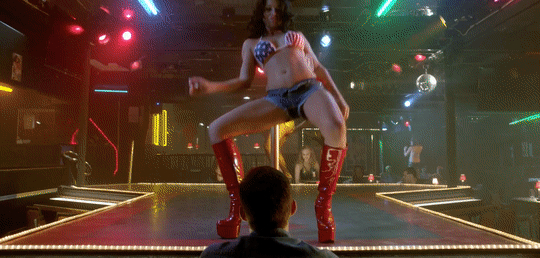
....yeah ok...got a little gay panic right there.
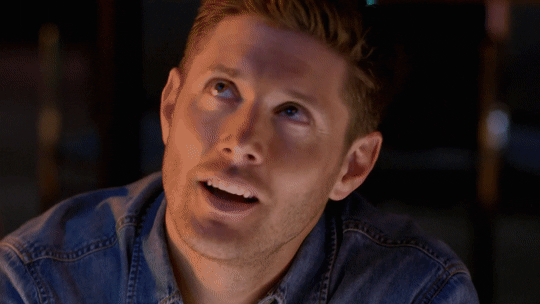
...awe such an asshole Dean come on
Girl: Aaaand we are done.
Yas girl u go
Bodyguard: time to go jerkwad.
me : YIKES
Demon Dean proceed to destroy the poor sob
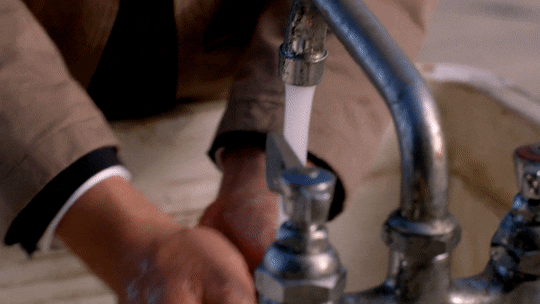
OK but seeing that much of Castiel’s skin .....oh yeah , bless the fan service.
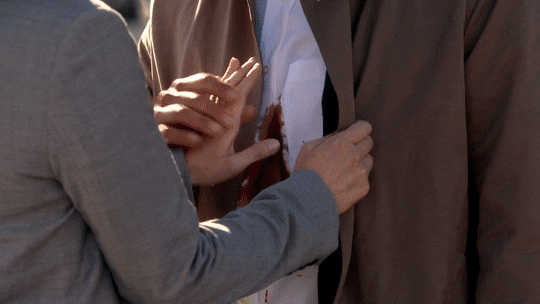
....WHAT WAS THAT HAND SQUEEZE? SO CUTE IM OFFENDED.
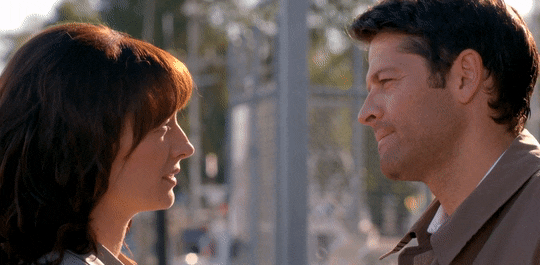
RUDE.
ILLEGAL
ARREST HIM.
C: Dean’s a demon????

BABE. STOP.
Sam approaching a car for sale: iiiit’s stealing tiiiiiiiime!!.

CAS
CASTIEL
JESUS BABE

that’s what went through his head and you can’t tell me otherwise. Like....bitch please people been tellin’ me that since season 4, get on the bandwagon
“Sam and Dean might be rough around the edges but they are the best men I’ve ever known, and they are my friends” SOB
Dean: “ with your tiniest umbrella”
Crowley : you know me so well
Dean: “ You sound like a viagra commercial”
SNORTS so sassy I miss him
Crowley: This isn’t about little Dean
SNORTS LOUDER
Crowley: The Mark changed you
Dean’s like : Jesus no shit sherlock
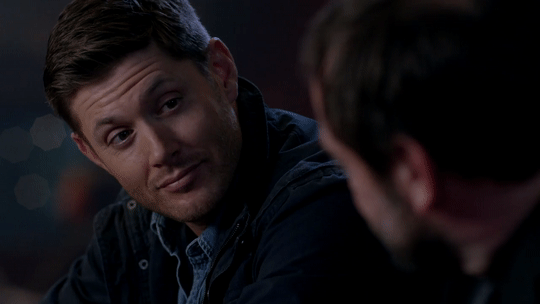
Who’s the Daddy tho
Drinks arrive. Fucking hope that’s not Margarita lol.
Listen here, Crowley plan wasn’t bad at all, he’s too good for them ok. and I miss him.
Crowley: FEED THE BEAST.
lol
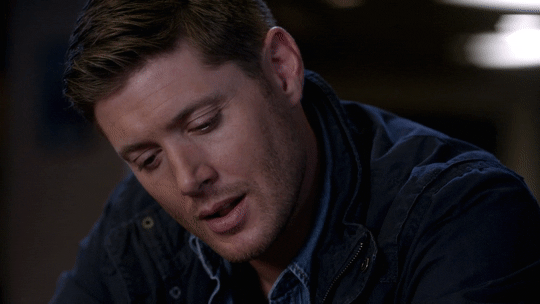
Hannah ...my god you look like fem castiel season 4 babe.
*Castiel begins to shed the trenchcoat*
me:

*Castiel asleep on the couch like a cute bean*
me:
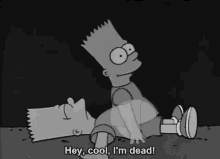
...Oh Lester you dumb fuck.
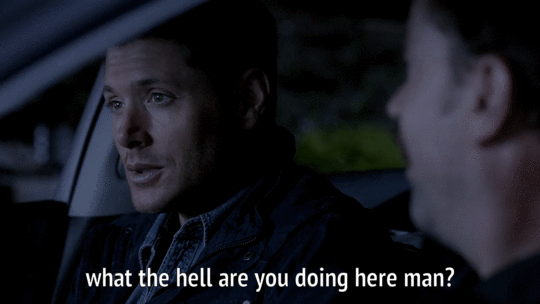
I ADORE how Jensen said this. LOVE.
Dean: “Murder 101. When you hire someone to kill your wife you don’t wanna be around when the hit comes down. It’s called an alibi”
Lester, you absolute dumb fuck
Dean: Les....you are a loser.
well that’s a bit ex-
Dean: Especially if she found out you’ve been messing around first
Les: *spluttering*
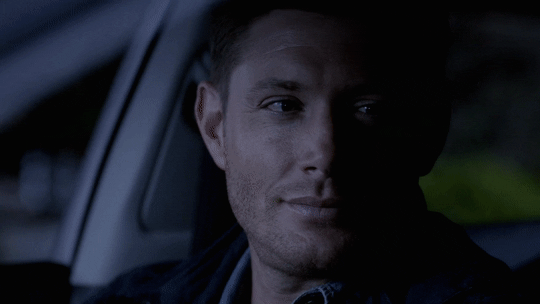
Les: Oh it’s different when the guys do it.
LES YOU ARE A FUCKING ASSHOLE AND YOU GOT WHAT YOU DESERVED. FUCK U.
Les: it’s called science.
me : *Spluttering* ....oh...OH U DED
Les: You are a punk-ass demon.
snorts
At this point I get confused tho. Like Dean’s a demon and yet here he kills him becasue he’s an asshole but it wasn’t exactly his target. So...??? I mean is there a gray area for demon dean? idk does he actually have morals ? I think he does but then there’s that final car scene about Cole and I’m not so sure anymore.
in other news , the look of absolute serenity Dean has on his face it’s both chilling and hot af.
ps: how Sam didn’t notice Cole following him?
OH NO CAS AND KIDS.

OH NO IM STILL IN DANGER
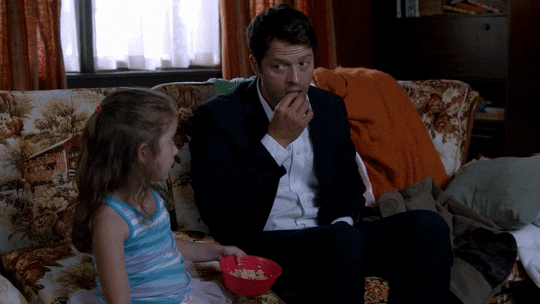
OH NO I NEED A MEDIC.
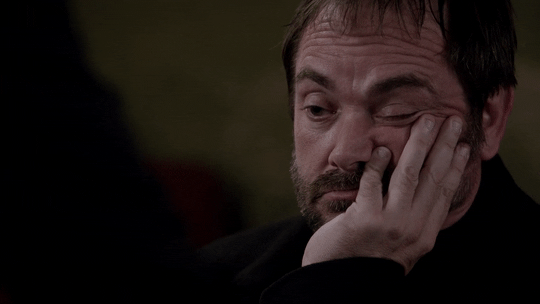
I mean, same.
THIS WHOLE SCENE Y’ALL.
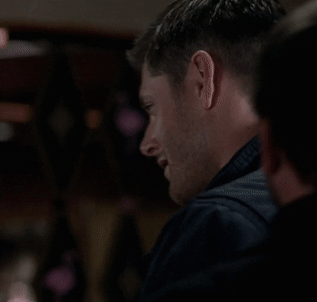
I CAN’T
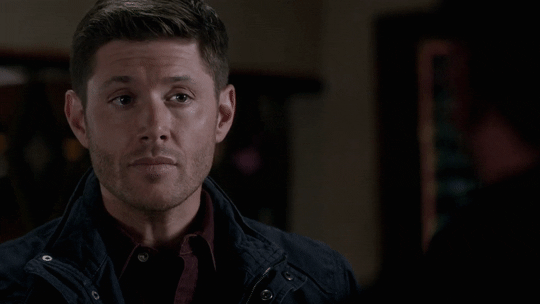
I’M MELTING
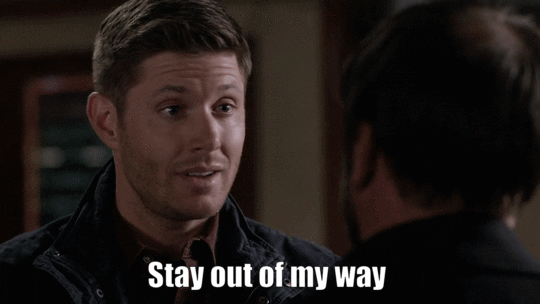
I NEED A TOWEL.
and worth of mention: Mark did an absolute fantastic job here. Crowley’s dialogue is damn great and true.
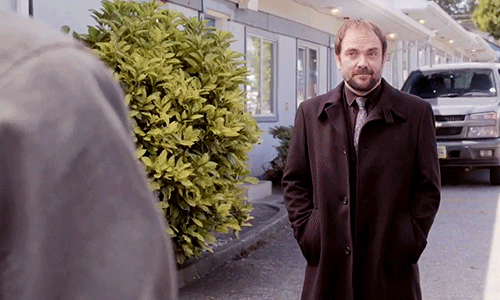
Cas’ constipated face again. amazing.
oh yuck Metatrone , idgaf.
C: Deals born in desperation always end in blood. And tears.
AIN’T THAT THE SUPERNATURAL WAY
C: it’s my life and it’s my choice and I don’t want this.
Chuck from behind the scene: LOL SURE JAN
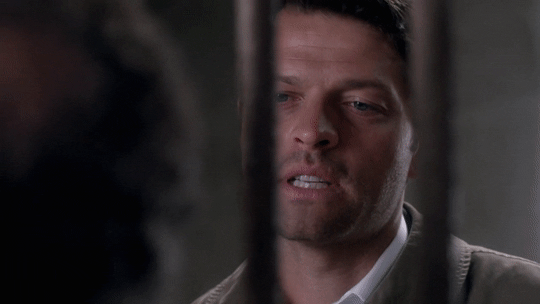
Metatrone babbling
Cas:

me:
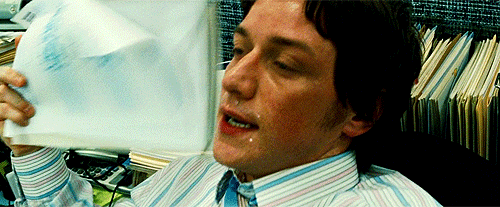
Ok Y’all need to stop with these fan service close-ups I only have one heart.
gotta say tho, the first blade looks like the most less sharp shit in the universe ok.
Dean: Hiya Sam
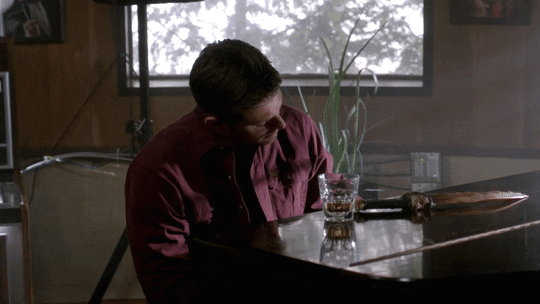
me: awe so cute.
S: Crowley sold you up.
Me&D: What else is new.
D: right now I’m doing all I can to not rip your throat out....with my teeth.
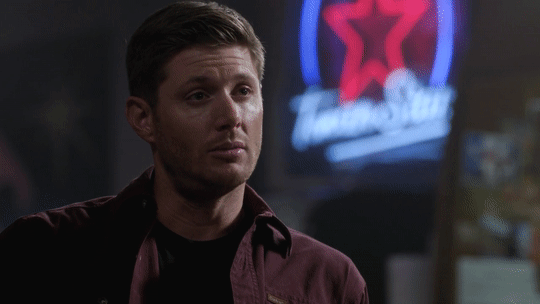
D: You don’t know what I’ve done. I might have it coming.
S: Well I don’t care. *tears up*
me tearing up too
S: Becasue you are my brother, and I’m here to take you home.

Dean : with your puppy dog eyes
lol
D: *confused demon look*
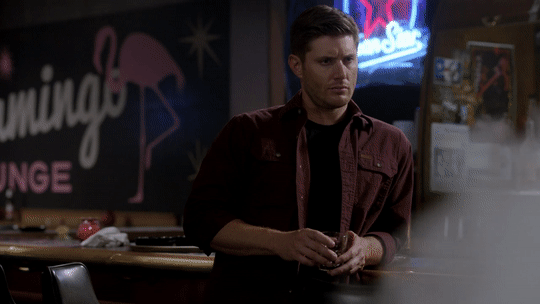
AAAAAAND Sam hits his head again. what else is new.
Look at this Drama Queen and his dramatic entry
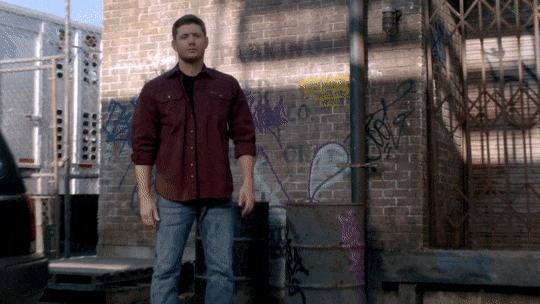
D: Did you miss?


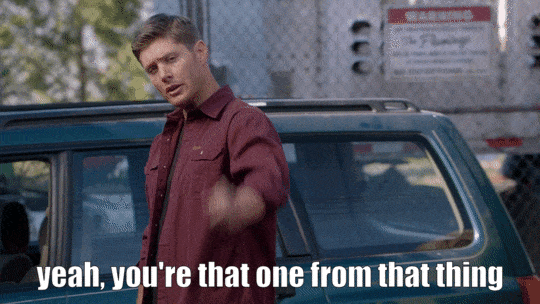
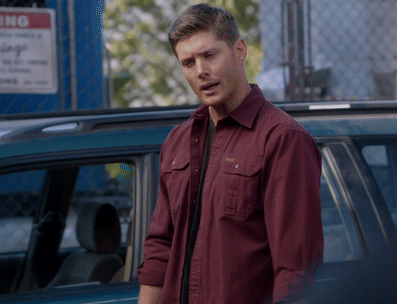
AW jeez I love him
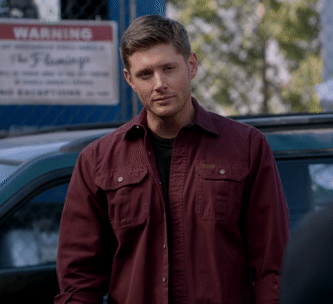

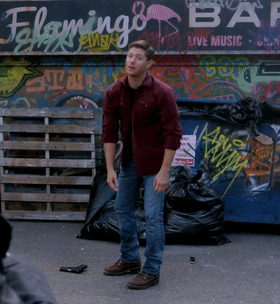
UUUUUGH WHY IS HE SO PRETTY, FUCK.
Also....Micheal Dean has nothing on Demon Dean in terms of fighting style ok.
This little shit.
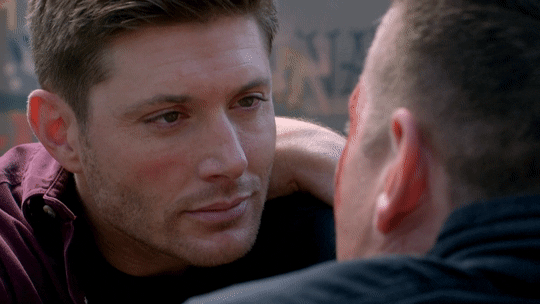
LOOK AT HIM
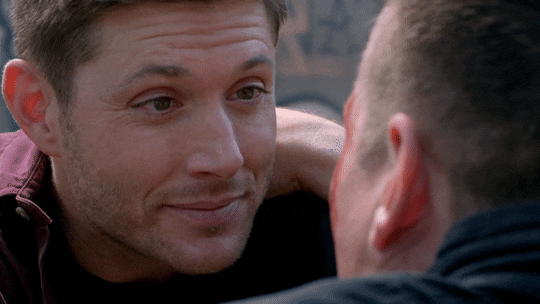
damn u
Ok but the flailing arms when Sam pour holy water on him makes me giggles .
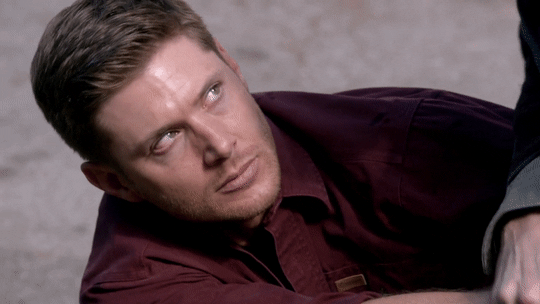
That is my face when dumb people talks and I can’t do anything about it.
C: I don’t wanna get....boned. LOL
Demon Dean’s face in the back of the Impala: Still me 24/7
I wan’t a spin off of Demon Dean and Crowley adventures
.
.
.
.
next is : Mystery Spot
@waywardbaby @ravenangel33 @mariekoukie6661 @wayward-and-worn @spnskinnyballs @starfirerules @cloverhighfive @supernatural-teamfreewillpage @dragontamerm @closetspngirl @rainflowermoon @destiel-honeypie @mattiecat @bunnybaby1211155 @aliaiteee @jacks-word-of-the-day
spn commentary masterpost
#reichenbach#spn#spn commentary#reichenbach commentary#10x02#spn 10x02#demon dean#dean winchester#Sam Winchester#castiel#Episode commentary#SUPERNATURAL COMMENTARY#spn random ep commentary
51 notes
·
View notes
Photo







Why is The Reichenbach Fall just a commentary on the The Final Problem written five years in advance?
63 notes
·
View notes
Note
Ok so i just finished watching sherlock in complete after watching it like wayyyy back when in 2014 tumblr era with the reichenbach fall and everything. So after finishing it i had some thoughts about the general fandom discourse and i thought who better to ask than char! Ofc ur not obligated to answer this!!
So as i finished it i thought john and sherlock’s story ended in THE most canon way possible? Watching i was honest to god going holy shit they didnt— they did that holy shitt?? Like they killed john’s wife, gave them a kid and basically ended it by saying yea john and sherlock lived together happily with a child forever and like also solve cases together this is their life now. And i was genuinely pleased with the outcome i felt it was the best way to handle that while giving the fandom everything it wanted! Then… i came online and found out that sentiment was NOT shared at all and i was baffled to say the least! So i was just wondering why that is? I feel like im not in the sherlock loop enough to deduce this on my own.
Anyway thanks for reading this if youve made it this far lmaoo hope u have a great day!
Hi anon! Sorry for the late response. I'm slowly going through asks on here after not having been on Tumblr super actively for a hot minute.
This is a bit of a complicated question (as most things are with Sherlock). But I will do my level best to answer is as comprehensively as I can.
I think there are a lot of elements at play in terms of how people perceived series 4 in general.
1. S4 breaks a lot of the rules that all the previous series set in place for the worldbuilding of Sherlock, and the way it's grounded in reality. It also has moments that feel out of character, too. (All of this is for a reason, but I will get to that.) Even things down to the cinematography have changed in a subtle ways, and feel off because they're meant to. But that means that in small and large ways, it upset many viewers. Sherlock's deductive reasoning skills are almost exaggerated in a superhuman fashion which makes things more unrealistic; John treats Sherlock overly poorly at times in ways that can feel out of character; Mary dies in a way that is physically impossible, and that physically impossible death is even mentioned in a previous episode as being unrealistic; everything about The Final Problem is absurdism to the extreme, with Eurus practically being from the X-Men; etc. etc. There's tons to point out. It doesn't feel like BBC Sherlock in quite a few fundamental ways, which a lot of people picked up on either consciously or subconsciously, and thus were upset by.
2. With the caveat that I did not feel this way personally: a lot of queer fans felt disrespected because they expected/wanted Johnlock to become canon, and then it wasn't, and then in the end Mary's voiceover added insult to injury by saying "Well, you listen to me: who you really are, it doesn’t matter. It’s all about the legend, the stories, the adventures." Many queer fans took that very personally, as if the narrative was telling them that it doesn't matter who you are and it doesn't matter who these characters are, or something. I will fully admit to you I don't fully understand why people took that to heart so strongly, and I don't think that was the intent at all, but that was a big part of the backlash as well. Combine that with how the end felt like ~the end of the show,~ and yet so much about S4 felt dissatisfactory, and it was just a clusterfuck of emotions for many people.
All that being said...
You saying it ended in "the most canon way possible" is very interesting to me, because you've hit the nail on the head, perhaps without fully realizing it.
The whole show–and series 4 in particular–exists as commentary on Arthur Conan Doyle's original stories, the Johnlock hidden between its lines, and Watson's unreliable narration. I talked a bit about that in this thread here. To make my point in this post, I'll post an excerpt below:
People read ACD Watson's stories and go "Why are all these details wrong? Did he just not care?" People watch s4 and say the same. But what comes next will expose the answer: false narratives were necessary for their safety because they're in love. For canon era, what threatens their safety is homophobia/heteronormativity in society at large. For the show, Moriarty and Mary are the personification of those things and force Johnlock apart; defeating them will lead to accepting and being open about the truth of their relationship. This is why the writers say they thought everyone else was "getting it wrong" & it's about the relationship between 2 men. BBC Sherlock a standalone story, but in wider context... it's commentary on Holmes and Watson in general, and illuminating hidden depths in ACD's canon.
To explain a bit further... basically, for a century, people have been pointing to ACD's stories and trying to make sense of the inconsistencies in Watson's writings to little avail. Details contradict each other, or salient points seem to be left out; this is also the case of series 4 and is part of the point. The prime theory about series 4 that I agree with / that aligns with my reading of it is that series 4 is unreliably narrated by or told by John Watson. It's often referred to as "blog theory" as shorthand, because the idea is that the show has become the blog. (I have reblogged some relevant posts tagged "blog theory" here)
Series 4 acts as commentary on John and Sherlock as characters, and as crucial commentary on Watson's unreliable narration in the original ACD stories. Why would Watson (or in our case, John) have had to hide or meddle with details? Well, maybe for the sake of their safety, as queer men in a time that would not look upon that kindly. This is what the show (seemingly, if we're correct) intends to convey and highlight by bringing these elements to the forefront, and by making Johnlock explicitly canon.
So when you say that series 4 ended in a way akin to the canon of the original stories, with John's wife dead and them solving cases forever (together with a kid)... you're correct. But part of the point is that there is more to their story, and for many, that feels insufficient whether they realize it or not. Sherlock series 4 show us a world where it's about the "adventures," where John and Mary are in love but Sherlock and John are at odds and in the end leave much unspoken, where the Holmes intellect is unrealistic, etc. to have people instinctively sense all of this is wrong and ultimately crave correction via re-centering Johnlock as the core of the story.
As Moffat said in 2014,
"I think we've always favored the characters, because that's the vivid thing in Sherlock Holmes stories. At the beginning of every Sherlock Holmes story, there are two or three pages of just Sherlock Holmes and Dr. Watson having a chat by the fireside. That's what people fell in love with. So we've always favored that. As we keep proclaiming to anyone who's not completely bored of it by now, it's not a detective show; it's a show about a detective. That's why it's a hit. That's why it's exciting." (x)
In the end of series 4, Mary says "It's about the legend, the stories, the adventures." But that's not what the creators think Sherlock Holmes canon has truly ever been about at its heart! So, why do this? They have given the general audience something that is, in many ways, unexpected but contains the elements that they would naturally assume they'd want... Mary dead, the Holmes siblings being soooo brilliant, it's only about the cases, etc... and they have done that to make viewers realize maybe that is not what they want, and thus make them understand the thing they DO want instead: Sherlock Holmes to be "the most human, human being," and for Sherlock and John to reach emotional catharsis together in a queer outcome.
Of course, you're valid Anon for liking the ending and not understanding everyone's dissatisfaction! I am genuinely happy you enjoyed it on its own merits in a surface level way!! And as I said, you're correct in saying that it aligns with canon in many aspects.
But a lot of people (consciously or unconsciously) expected/wanted this show to go beyond the (heteronormative) veneer original canon maintained for Holmes and Watson... partially because the show has been setting that up for years. And if they didn't want it before, after the weirdness of series 4, they especially will want it now. So–if we're correct–that is the very deliberate intention, and it's been set up to be subverted in series 5. Series 4 will be explained / have reasons for its existence, and in series 5 the true story will be told.
(The final words of Arthur Conan Doyle's original canon, in the order in which they were first presented, were "Someday the true story may be told.")
I hope that clears things up a bit, even though this explanation is fairly long and probably went in directions you didn't expect lol. And if you want to read some series 4 meta, "Poetry or Truth" by @garkgatiss is some of the best there is. At some point, I'm going to try to put together a solid masterlist of series 4 meta too for anyone who may be interested in diving in fresh!
Thank you for the question, and I'm really glad you got back into Sherlock, as it is (obviously) one of my favorite things! <333
90 notes
·
View notes
Text
just watched the Sherlock Gnomes movie again and I, again, wrote commentary through it, and here it is
reminder that you can block the tag #juli watches if my ramblings while watching shit bothers you
again. the begining kinda sucks
I really like Gnomeo and Juliet and their relationship
they're really cute
gods I hate Sherlock a bit, he's an asshole
I love Watson
he's such an exhaspered husband
I love Watson
I love Holmes nose
I love the mind palace that's so good
that's so gay skdjdksk
I love the mirroring in their relationships skdjdksk
I love the mind palace so much but also the music and dancing with himself he's so gay I love him
the mirroring the mirroring omg
I never realised that that's a reverse reichenbach but omg
also I can't believe a garden gnomes film makes me cry
tHE EMOTION SJSJSJSJ
that's so gay skdjdksk I love him
just noticed he's got a black ring on his left pinky, that's gay but also, marriage/engagement ring with Watson? or alternatively, ace ring (bc Sherlock Holmes is probably maybe asexual in all adaptions and def in acd canon)
I love Irene she's so dramatic skdjdksk
"where Watson and I solved our first case" that's so gay skdjdksk
Watson's facial hair sucks so much sksksk
that's so gay
the backstabbing, ouch
Watson's eyeshadow is on point tho
this whole thing is a huge h/w mirroring
"well, of course. you're Watson" skdjdksk gay
and there goes reichenbach
"you'd give your life for me" "of course" that's so soft I'm crying the of course is the softest thing he says in the whole movie
"if you'll have me back" skdjdksk
the hand on the shoulder skdjdksk
the mirroring is so intense im dead
this is maybe possibly the gayest adaptation of Sherlock I've seen but also I love this movie bc it's funny and casual and it's pretty short and it's /good/
edit: here's the link to my commentary post when I watched this movie for the first time
#juli watches#sherlock gnomes#Sherlock Holmes#gnomeo and juliet#john watson#h/w#johnlock#mirroring#meta
47 notes
·
View notes
Text
This time, my rantings on the morgue scene. I know I'm far from the first person to say "what the fuck" to this one, so a slightly different flavor of commentary on chapter 2. AKA, "the only thing worse than what John did to Sherlock is what the writers did to John's character:"
In a more well-constructed narrative with a coherent arc in mind, I actually think the could've worked. It shows very well how abuse actually /starts/, in several ways. We all have the stereotypical image of a battered wife getting beaten for burning dinner in our heads, but this shows how that cycle actually starts: John, when in an extremely tense situation, under huge amounts of pressure, after unresolved trauma after unresolved trauma was heaped on him, snapped. The first ~three times he hits Sherlock there, it's even because he genuinely is trying to stop Sherlock from hurting somebody else. But then he snaps, and then he can't stop. It escalates further. Abuse is almost never a final, end destination, it's an escalation from minor slights into the more and more unacceptable, and that's what TLD is. It's the end point of the escalation, in how John/the narrative has treated Sherlock as more and more an acceptable target for physical violence:
1. There's the little fist fight in Scandal in Belgravia, played as little more than a shoving match, and instigated by Sherlock. If John needs to be forgiven for that one, then so does Sherlock. Then there's the violence in The Empty Hearse: less lighthearted, less funny, less 'acceptable'. But John was a heartbroken, griefstricken, furious mess, and Sherlock and even Mary were stepping on him at every turn. The violence was unacceptable here, because violence is always unacceptable, but the situation John was in wasn't exactly one that's comparable to real life and the way he was feeling is something none of us can even imagine. It's not okay, but it is very easily forgivable.
2. Then, there's HLV. John never hits Sherlock, here, but he does threaten to, when they're all in the flat together after the shooting. This time, it's absolutely not played for laughs. John threatens to beat Sherlock unconscious, because John is angry, and Sherlock is a convenient target for it-- a Sherlock that John knows is already in huge amounts of pain and is extremely unwell. Sherlock even flinches when John shouts at him. Once again, John is in an unbelievable situation under incredible amounts of stress-- and once again, the narrative seems to suggest that John would be justified. Most alarming, though, is that this time, the stress John is under is not at all Sherlock's fault. But John still threatens to hit him for it, at a point where that could, quite literally, kill him. And while this episode makes John look like a bloody awful and incompetent trauma surgeon in multiple ways (likely because of lack of care in writing the script), in this Watsonian perspective, John knows it. He threatens it anyway.
3. And then we get to TLD. Once again, we have John in large amount of pain and under stress, and once again, we have a very unwell Sherlock. This time, it's not a threat: we have John kicking a completely unresisting Sherlock on the floor until he's coughing up blood. I don't think I need to prove my point about this one.
I don't think I need to prove the point that it's unacceptable, either. If John had treated Mary this way-- Mary, who was canonically very capable of defending herself, and had hurt John very deeply, and done horrible things-- then nobody would question it as abuse. Sherlock being a man does not change that the way John treats him is unacceptable.
My point in laying all that out is that, in a more coherent narrative, that focuses on John's unresolved trauma, specifically his grief and pain after the fall and never getting the true explanation and apology he deserved, and then being treated to a very similar trauma by Mary's deception, this is an arc that actually makes sense. He escalates into the more and more unacceptable, dragged on by trauma of his own, until he crosses the line into abuse. It is a believable and honestly accurate depiction of the cycle of abuse and trauma-- and it's also not unforgivable. TLD is the first time he truly crosses that line, and in a more coherent narrative, TLD could've been the turning point in both their arcs. It could've been where John realized what he'd done, and promised to do better. It could've been where John confronted Sherlock and told him "no, all these plans of yours that just focus on you risking your life and getting hurt don't help me; if you really want to be a good friend to me, /take care of yourself/'. Sherlock and John could've finally had a face-to-face about Reichenbach, Sherlock's hiatus, and Mary's death.
We all know that that wasn't the narrative that we got. Instead, the narrative itself seems to be thoroughly convinced that the beating was justified. Not even because of John's unresolved issues about the fake suicide, because that was never even once mentioned-- but just because Sherlock is Weird and A Cock and says mean things sometimes, it was deserved. That, despite John trying to insist to us otherwise, Sherlock really is a machine, and isn't affected at all: not by being tortured in Serbia, not by being Mary's shooting target, and not by being John's punching bag. Greg, Sherlock's police officer friend that dropped literally everything to call a helicopter when he thought Sherlock needed help, didn't seem to think it was a big deal. Mycroft, and, of all people, MRS. HUDSON, didn't seem to even care. It was literally never addressed again, by anyone. In the Hug Scene, the scene I was expecting to be an apology, /John/ even ends up being comforted by /Sherlock/, with NO MENTION of the beating whatsoever.
The only conclusion to draw is that the narrative agrees with Sherlock: John was entitled.
The beating, if handled properly, could've been a believable reaction to trauma, and if handled properly, it could've been a forgivable one. Instead, it turned into something that betrayed the entire premise of the show. It says that Sherlock probably deserves whatever he gets because he's just a heartless bastard, and he isn't affected by it because he's a machine, and meanwhile, for all that he's meant to be "the heart", John apparently has just given up being a friend and simply beats Sherlock to make him behave. It says that these two bring out the worst in each other and honestly probably shouldn't be in the same room ever again.
Obviously, I'm rejecting that premise in this fic. But it's the story that canon gave us, and that instead of addressing it, TFP swept it all under the rug for the sake of some sort of ridiculous twist ending.
#sherlock#the lying detective#meta#tw abuse#hi i'm ranowa and don't know how to be concise or shut up#yeah so what the HELL was that scene#like i genuinely don't know why it exists#if they weren't going to bother addressing it#it's like half the scenes in the last two seasons#'why is this here if you weren't going to resolve it'
26 notes
·
View notes
Text
5 favorites
rules: it’s time to love yourselves! choose your 5 favorite works you created (fics, art, edits, etc) and link them below to reflect on the amazing things you’ve brought into the world. tag as many writers/artists/etc as you want (fan or original) so we can spread the love and link each other to awesome works!
@discordantwords just did this (check out her favorites here!) and tagged anyone who wanted to share, so this is me sharing!
1. Abditory - My first ever fic, written for @pippn-frodo in the winter 2017 round of Holmestice. It’s a 5 + 1 from Sherlock’s POV set before, during, and after canon and ends in a hopeful place with John. It was both exhilarating and terrifying to finally share my own story after years and years of reading others. This story will always hold a special place in my heart.
2. Is It Any Wonder - A 221b ficlet, also Sherlock POV, set just after the end of The Empty Hearse in which Sherlock reflects on his (bloody) reunion with John. It’s suitably angsty and scratched a post-Reichenbach itch I’ll never get rid of.
3. Out of Every Nowhere - Speaking of post-Reichenbach reunions... John returns to Afghanistan after Sherlock’s Fall and has two surprising encounters. My beloved Splix’s gentle recommendations saved this story and when I remember her hilarious commentary, it makes me happy (and only a little mortified- my draft was rough). I tagged this one Friends with Feelings, because there are lots of those here.
4. Carpe Vinum - Sally Donovan POV, set pre-canon not long after she was promoted to DS. A case goes wrong and leads Sally to question her life choices until she gets a timely call from one DI Lestrade. I had fun creating my own headcanon for Sally’s background. I want to write more about this Sally some day.
5. Forth They Went Together - My version of the Snowed In Together trope. Post-S4 Sherlock and John are stuck on a train with nothing to do but talk. It starts out lighthearted but turns serious as John finally clears the air.
I too tag anyone who wants to share- if you do, please tag me so that I don’t miss it!
#bbc sherlock#my fic#writing meme#i came late to the fic writing party#didn't start until after canon ended#but glad i did
18 notes
·
View notes
Text
ELEMENTARY COMPLETE DVD BOX SET DVD EXTRAS
@amindamazed asked: “Do you know if the complete box set has extras that aren’t also in the individual season sets?”
I answer: Unfortunately, I do not have all the seasons individually, so I cannot comment for sure. All I can do is write down a list of the extras the complete box set, that I have, has. It is possible that there are box sets with different content out there though.
Here is a list of DVD extras from the ELEMENTARY S1-S7 COMPLETE BOX SET:
Disc number - Episode number - Episode Title - Deleted scene dialogue line/Special Feature title - Clip lenght
SEASON 1
Deleted scenes:
NONE
Specials:
D1: A Holmes of Their Own 11:53
D1: In Liu of Watson 9:46
D6: Holmes Sweet Holmes 17:57
D6: Set Tour with Lucy Liu 03.19
D6: CBS Launch Promos 08:07
D6: The Power of Observation Pt 1 - Pt 6:
Pt 1: Series Preview 00:36 Pt 2: The Legend Comes to Life 03:28 Pt 3: Seeing is Believing 03:02 Pt 4: Devil in the Details 03:44 Pt 5: Pieces of the Puzzle 04:35 Pt 6: My Dear Watson 03:53
SEASON 2
Deleted scenes:
D2: 2x07 “The Marchioness”: It’s lovely out here. 00:30
D6: 2x21 “The Man with the Twisted Lip”: We e-mail sometimes. 00:47
Audio Commentary:
D6: 2x22 “Paint It Black”: Audio commentary with Lucy Liu & Ron Fortunato 41:23
Specials:
D1: Holmes Goes Home (filming S2 premiere in London) 07:58
D5: Under the Magnifying Glass 08:04
D5: Skill Sets 07:09
D6: Second Chapter: Inside Elementary S2 (Elementary S2) 19:46
D6: Art in the Blood: Meet Mycroft 08:44
D6: The Life of Clyde 04:09
D6: Gag Reel/Bloopers 03:15
SEASON 3
Deleted scenes:
NONE
Audio Commentary
D4 3x14 (315) “The Female of the Species”: Audio commentary by Lucy Liu 39:54
Specials:
D1: Watson Style 07:20
D3: Hello Kitty Winter 07:03
D6: Partners in Crime 23:37
D6: The Elements of Deduction 12:03
D6: Bell on the Scene 10:49
D6: Gag Reel/Bloopers 04:15
SEASON 4
Deleted scenes:
D2: 4x05 “The Games Afoot”: Talk to you later. 01:07
D2 4x07 “Miss Taken”: Whatever you have to say, I can hear it. 00:59
D2 4x07 “Miss Taken”: It’s not that complicated. 01:06
D2: 4x08 “A Burden of Blood”: Thanks for coming in. 00:27
D3: 4x09 Murder Ex Machina: Mason, right? 00:21
D4: 4x13 “A Study in Charlotte”: Unfortunately Watson is running late for an ambush. 00:40
D6: 4x22 “Turn It Upside Down”: I might have some personal insights. 00:25
D6: 4x22 “Turn It Upside Down”: Abandon all hope ye who enter here. 00:43
Specials:
D2: 4x07 “Miss Taken”: Mina, Cassie & Ally 06:55
D4: 4x16 “Hounded”: Wag the Dog: Hounded 03.36
D6: The Sign of Fourth (Elementary S4) 19:10
D6: Villainy! (The villain(s) on the show) 08:28
D6: Father Holmes (Morland Holmes) 05:13
D6: Gag Reel /Bloopers 03:19
SEASON 5
Deleted scenes:
D1: 5x01 “Folie a deux” Did you know you favour your left knee over your right? 00:17
D1: 5x01 “Folie a deux” What the hell? 00:13
D1: 5x01 “Folie a deux” This is Chloe, and Adam. 00:35
D5: 5x18 “Dead Man’s Tale”: If you ask me, Joan, he (already) got away with it. 01:22
D6: 5x22 “Moving Targets” He doesn’t look like a monster 00:27
D6 5x22 “Moving Targets” We open in 30 minutes 00:18
D6: 5x24 “Hurt Me, Hurt You" Guy’s a cool customer 00:43
D6: 5x24 “Hurt me, Hurt You” It’s done. 00:37
Specials:
D1: 5x04 “Henny Penny, the Sky is Falling”: For the Hundreth Time (Ep 100 Special) 05:50
D4: 5x13 “Over a Barrel”: Flashbacks 06:03
D6: The Fifth Elementary (Elementary S5 special) 19:43
D6: Reasoning Backwards 09:54
D6: Gag Reel/Bloopers 06:38
SEASON 6
Deleted scenes:
D2: 6x07 “Sober Companions”: I got your e-mail. 00:27
D5: 6x17 “The Worms Crawl In, The Worms Crawl Out”: Your partner not coming? 00:14
D6: 6x21 “Whatever Remains, However Improbable...”: Hey, its me again. 00:26
Specials:
D6: Six of One, Half Dozen of the Other (Elementary S6) 20:56
D6: Making Friends Can Be Murder (Michael) 08:18
D6: Elementary: Case in Point 15:36
SEASON 7
Deleted scenes:
D3: 7x11 “Unfriended”: Who are you, guys? 00:24
D3: 7x11 “Unfriended”: We can’t control this anymore. 01:01
D3: 7x12 “Reichenbach Falls”: I’ve never seen so many policemen. 00:42
D3: 7x13 “The(ir) Last Bow”: My two favourite consultants. 00:15
D3: 7x13 “The(ir) Last Bow”: NO DIALOGUE - Sherlock at Moriarty/Irene’s funeral 00:27
Specials:
D3: Mystery Solved - The Final Season 24:04
D3: Holmes is Where the Heart is 07:35
D3: Gag Reel/Bloopers 02:44
THE END
#ELEMENTARY#CBS ELEMENTARY#DVD EXTRAS#LIST POST#JOANLOCK#Rob Doherty#Jonny Lee Miller#Lucy Liu#Sherlock Holmes#Joan Watson#ELEMENTARY DVD EXTRAS
57 notes
·
View notes
Text
The Man in the Barrel

Some excellent observations from @ebaeschnbliah with an addition from @raggedyblue (X) made me reflect a little over the topic of Nelson in BBC Dracula, and the idea of having someone enclosed in a barrel. In Blood Vessel, when they are searching the ship Demeter for hidden murder victims and murderers, Dracula finds the young deckhand Piotr about to open a big barrel on deck, and tells him the following anecdote - apparently to distract Piotr - about Nelson after the Battle of Trafalgar (1805):
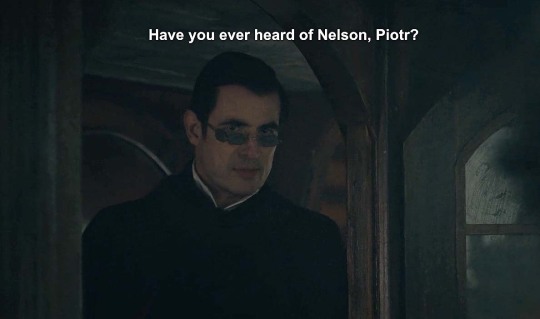
COUNT DRACULA: Admiral Nelson was killed at the Battle of Trafalgar. Died of his wounds, they say. And they wanted to get him back to England with all speed. National hero. The British are very keen on that sort of thing. But Spain is quite a way, and it was hot, so what do you think they did? They put the old admiral into a barrel of rum to preserve him.
PIOTR: No!
COUNT DRACULA: True. Trouble is, they didn’t tell the crew. So when they got home to England, they found out that those thirsty sailors had been helping themselves to a drop or two all they way back to Portsmouth.
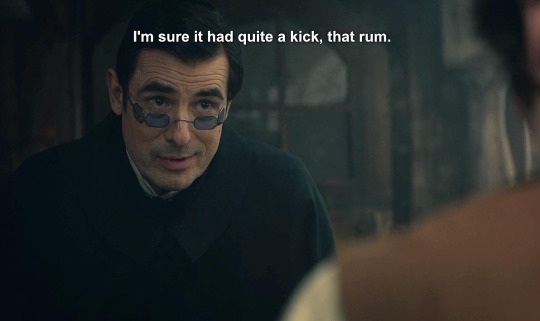
(Continued under the cut)
Then Dracula digs his hand into the barrel and pretends there’s a monster in there that grabs his arm. He does this apparently to joke with Piotr, but then he scares him away by being creepy.
I can’t help thinking that this reference must have some metaphorical meanings, so I took to read some more about Vice-Admiral Horatio Nelson (X).
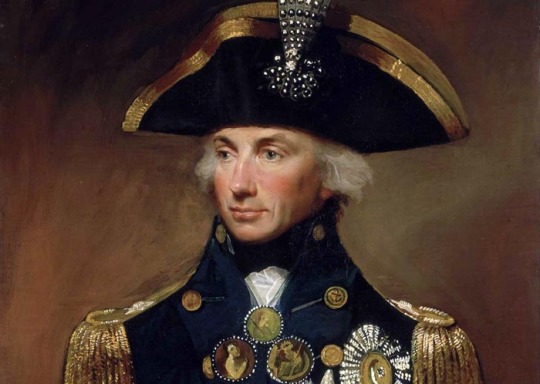
First of all, the anecdote seemed rather exaggerated to me. Looking it up, Dracula’s version appears very much like a tall tale. According to Wikipedia, Nelson’s body was actually transported ”in a cask of brandy mixed with campher and myrrh, which was then lashed to Victory’s main mast and placed under guard”. Not a barrel, thus, and not rum. If the cask was placed under guard, I very much doubt that any crew member would dare to even approach it, not to mention drink from its content. But there’s apparently a grain of truth in the story; Nelson’s body was preserved in alcohol onboard.
Nelson is one of the most famous British national heroes; a high-ranked naval officer who sacrificed his life for his country in battle and brought Britain to a glorious victory over Napoleon.
By the way; Thatcher, another (in)famous British leader, is in BBC Sherlock rather compared to Napoleon, since The Six Thatchers is a direct reference to ACD’s The Six Napoleons. And Napoleon, as pointed out in @raggedyblue’s addition (X) has resemblances with Jim Moriarty - the ”Napoleon of crime”. In my opinion Moriarty in BBC Sherlock (among other symbolisms, and maybe this is the case also in ACD canon) represents homophobia.
Anyway, Nelson fought many battles and lost an eye and an arm in them, so the pirate references are actually there too. Dracula even puts emphasis on this:

As Dracula also points out, Nelson is a national hero for the British people.
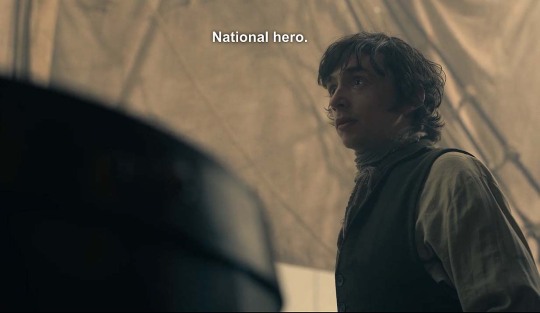
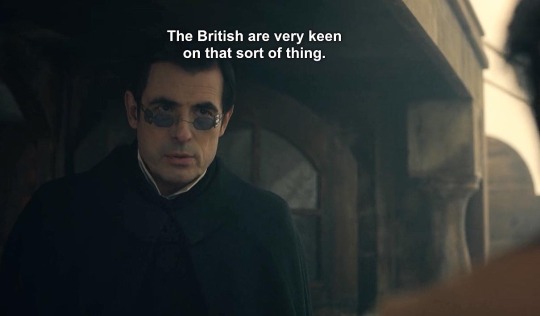
Going by Wikipedia, Nelson was very popular already when he was alive. He’s described as a skilled strategic war leader who cared about his troops, and the Battle of Trafalgar did lead to a great victory for his country. But he also appears as a rather controversial human being (X); his behaviour is described as self-centered and ”vain” (X), he actively supported slavery (X), and he definitely cheated on his wife (X). He also seems to stubbornly have not listened to some advice from his fellow naval officers at the Trafalgar battle (X), which otherwise might have saved his life. One piece of advice was that he should “remove the decorations on his coat, so that he would not be so easily identified by enemy sharpshooters”, but Nelson refused, and was shot.
Another interesting thing about the Battle of Trafalgar is the marine signal flags that Nelson used on the HMS Victory to transmit the following famous message to the part of the British fleet present on site:
"England expects that every man will do his duty" (X)

Flag combinations represent the three last letters of the message. Picture by J.M.W. Turner, (X). HMS Victory still exists, by the way, and is the world’s oldest naval ship still in commission! (X)
I have tried to explore the meaning of signal flags in TFP, BBC Sherlock, in this meta, including the interesting discussion that followed (X).
A statue of Admiral Nelson (X), on a 52 m high column, stands in the center of Trafalgar Square in London, guarded by four sculpted lions that weigh 7 tons each. The square is a large meeting point in London, which is often venue for different kinds of political demonstrations. I mentioned it in this post about the punk rock musician Tom Robinson (X), who was most famous in the seventies for his fight for LGBTQ rights. There’s this photo of Tom and his band at a protest against the prosecution of the magazine Gay News, London 1978 on Trafalgar Square, where Tom in my opinion looks a great deal like Sherlock, coat and all (X).

Trafalgar square also figures several times in BBC Sherlock - once per series in fact. In TBB (S1) Sherlock and John cross Trafalgar Square, talking about codes and ciphers:

In TRF (S2) there’s a scene where the police car carrying Sherlock and John to the court passes Trafalgar Square, while John is telling Sherlock what he ought to remember once they arrive. We see Nelson’s statue reflected in the car window:

And then there’s one moment in TEH (S3), when John and Sherlock are discussing older underground stations via Skype with the nerdy train enthusiast Howard Shilcott. One of the stations mentioned is Trafalgar Square.


Trafalgar Square and the Strand. Hmm...
Last but not least, in TLD (S4) Sherlock and Faith/Eurus pass Trafalgar square on their little night stroll through the streets of London:
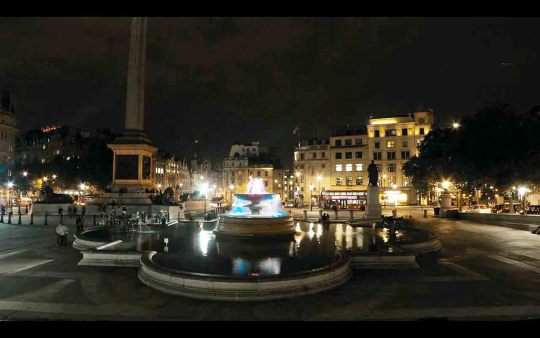
Anyway, enough about Trafalgar Square; back to Nelson and his (supposed) barrel. A man being held in a barrel also makes me think of the ancient Greek philosopher Diogenes the Cynic (404-323 BC), who used to live in a huge clay wine jar (X). According to Wikipedia Diogenes “made it his life's goal to challenge established customs and values” and also “considered his avoidance of earthly pleasures a contrast to and commentary on contemporary Athenian behaviors. This attitude was grounded in a disdain for what he regarded as the folly, pretence, vanity, self-deception, and artificiality of human conduct.” Quite the opposite of Nelson, I’d say. :) But doesn’t it sound a little bit like Sherlock’s opinion about marriage and weddings in his best man speech in TSoT? ;)
In art Diogenes is often depicted surrounded by dogs (X):

(X) Diogenes believed human beings live artificially and hypocritically and would do well to study the dog. He also carried around a lamp “looking for an honest man”.
There’s also a dirty joke about ‘being in the barrel’, as described by Urban Dictionary (X). (I suggest you look it up for yourselves if you’re interested, though, because I’m not gonna reproduce it here ;))) )
So, in summary: Nelson is a national hero known for having sacrificed his life for his country. But he’s also pirate-like, he takes foolish risks and seems to care little about his own survival. He’s an old ‘war lord’ (like Dracula), and Napoleon (= Moriarty - or Thatcher in BBC Sherlock) is his adversary. He dies in battle in a war against Napoleon, but after his ‘fall’, he gets preserved in alcohol, and (like Dracula) the legend about him lives on for eternity. He’s ‘Un-Dead’ and preserved for ever, but doesn’t seem ‘real’ any more. But there’s also another side of him, where he is a controversial figure; vain (’posh’?) and extravagant. In BBC Dracula we hear a tall tale about his fate, where he ends up inclosed in a barrel. Going with the Diogenes analogy, the barrel and an ascetic living could also be self-inflicted. And the dogs are a strong theme in his life. ;) @raggedyblue mentioned ‘Reichenbach vibes’ here (X), and I can only agree. :)
@ebaeschnbliah @gosherlocked @sherlockshadow @shylockgnomes
41 notes
·
View notes
Text
The ACiD Test
While following some clues related to The Game is Now, I recently stumbled on a Sherlock Holmes-related film that I’d never heard of before.
This film, called Reichenbach Falls, has been heavily referenced throughout Sherlock. As you might guess from the title, most of the direct references are in the episodes The Reichenbach Fall and The Abominable Bride. However, the film’s premise, and the increasingly surreal world of Sherlock, suggest that Mofftiss may also have referenced some of its themes throughout the series.

In 1998, Scottish mystery writer Ian Rankin wrote The Acid Test, a short story featuring his famous detective, Inspector John Rebus. Rebus is best known from full-length novels, but this story ran only three pages in Edit, the University of Edinburgh magazine [x]. The Acid Test was reprinted a few months later in Ellery Queen Mystery Magazine, but to my knowledge has never appeared anywhere else. It is fair to say that when BBC4 produced this film version in 2007, screenwriter James Mavor created a completely new work—I suspect with his frequent writing partner Ian Rankin, although Rankin is not credited as a writer on the project.
The acid test described in the short story was distilled into a small but important plot point in the film, and it was surrounded with entirely new layers of dream and narrative. Reichenbach Falls is a story about storytelling, about Doyle and Holmes, and about Rankin and Rebus.

Reichenbach Falls aired a handful of times on BBC4 in late 2007 to early 2008, then one last time in 2010. Since then, it has been screened occasionally at festivals, most recently twice in 2017.
The film opens with our protagonist, renamed from John Rebus to James Buchan, pissing against marble as he recalls events that have shattered his world. Images flash: a blank page, a sheer drop into water, and the man himself: it turns out that Buchan’s makeshift urinal is the Sherlock Holmes statue at Picardy Place, where Arthur Conan Doyle was born and where Buchan’s partner is about to die.

Where did it all begin? I mean, I know where it's going to end, but the start? The body in the tunnel? Or was it the package? No. I think we have to go back. Back to Sherlock bloody Holmes.
This voiceover is a bit of a cheat: we aren’t going back at all, we’re going forward. Buchan steps away from the statue and the events he has just recalled unfold before us. Gerry Rafferty’s song Baker Street plays over the opening credits, accompanied by a slideshow of various illustrations and reenactments of Sherlock Holmes’s fall from the Reichenbach.
Shall we go over together, under the cut?
By the time Rankin wrote The Acid Test, Inspector Rebus had a considerable following. The first Rebus novel, Knots and Crosses, was published in 1987; like Rebus’s name, the title alludes to a game. Rankin typically throws his main character into stories that allow him to write social commentary, disguised as fiction, and he gives Rebus many of his own traits and experiences—to a large extent, Rebus is Rankin. In 2007, one month after Reichenbach Falls first aired, Rankin retired him in the 17th Rebus mystery, Exit Music, only to bring him back five years later in Standing in Another Man’s Grave. It’s a familiar trick.
As an Edinburgh writer, Ian Rankin weaves references to the city’s literary history into his fiction. Accordingly, Reichenbach Falls includes characters named for Joseph Bell (Doyle’s professor and the inspiration for Sherlock Holmes’s deductive skills), Muriel Spark, and Robert Burns. The protagonist (DI James Buchan) is named for writer John Buchan, who is to espionage fiction what Arthur Conan Doyle is to detective fiction.
Reichenbach Falls is difficult to condense without losing pieces that become important to Sherlock (which is my focus), because Mofftiss have referenced it a lot, so I’m going to divide what follows into four sections about 1) the relationships between the characters, 2) the fake mystery, which drives the plot until we understand what story is really being told, 3) the narrative device, and 4) the Fall. After that, I’ll talk about how Mofftiss may be using these elements in Sherlock. I’ve also linked five shorter metas at the bottom of the page, because there are simply too many references to fit in one post.
1. Caricature Development
Like every good love story mystery, there is a triangle here.
James Buchan is a bitter, hard-boiled detective. He’s adrift and self-destructive. He drinks. He sleeps too much and has vivid nightmares. He smokes and smokes and smokes. His only ambition is to take down Robert Murray, who—in addition to having shot Buchan’s partner Gerry, just as Buchan finally handcuffed him—appears to be behind every crime committed in Edinburgh.
Buchan recently lost his wife, Clara. She was the love of his life, and he can’t let her go. He keeps an enormous collection of photographs of Clara on the wall above the living room couch where he sleeps, badly, dreaming of Clara and of Gerry’s death. He almost never recalls one loss without also recalling the other.

Clara hasn’t died, though (I know, I was as surprised as you are). She left Buchan for their close friend, Jack Harvey, a famous mystery writer who is about to release a highly anticipated new novel: St Bernard’s Well. The novel, whose plot is a closely guarded secret, is named for the place where Buchan and Clara were married.
It hurts. It all hurts, all the time. He misses her. Buchan’s memories are always accompanied by a simple theme on piano, three notes. When he’s saddest, the piano is joined by a violin.
St Bernard’s Well is a real Edinburgh landmark. It’s not so much a well as a spring; its apparent healing powers were discovered in 1760, and a small monument was later built there. Buchan and Clara were married in this monument. I’m partly telling this story to explain that St Bernard’s Well doesn’t physically resemble the well where John was trapped in The Final Problem. However... toward the end of the film, the Well is featured in a viney yellow mural, which suggests strongly to me that the Well did inspire the wedding reception design in The Sign of Three.

BUCHAN: We got married. Everyone was there. All our friends.
Buchan is not doing nearly as well as John Watson, though, because Buchan and Clara had exactly four (4) wedding guests. All their friends.
The relationship between Buchan, Harvey, and Clara is complicated. Clara clearly still wants Buchan, but she seems happy with Jack Harvey, and insists that Buchan stop stalking her and leave her to the writer who came between them.

Jack Harvey comes across as cold and arrogant, but it’s difficult to root for Buchan either, because he’s a complete mess: a pulp fiction cliché. For Buchan, Harvey’s success is infuriating. He’s everywhere; Buchan can’t escape Harvey’s image, his voice on television, even his books, since Harvey sends him a copy of everything he writes—including an advance copy of St Bernard’s Well. Buchan can’t even trail a suspect without running into Harvey in the street.

Harvey: Did you read it?
Buchan: No.
Harvey: Maybe you should.
And just as Buchan hits the ‘hardboiled detective’ characterization a bit too hard, his nemesis Robert Murray is a cartoon cut-out of a villain. Murray’s ridiculous facial hair leads Buchan to call him The Monkey. (I regret to inform you that “I’ve had The Monkey on my back for fifteen years” is actual dialogue from the film.) After killing Buchan’s partner, Gerry (as he posed as a busker singing Baker Street, no less), Murray pulls Buchan in close, and whispers in his ear.

MURRAY: Your move, Buchan. You. And everyone you care about. Dead.
As a Sherlock fan, this is about the point where I reached for the shock blanket, but I promise you, things are about to get much, much more disturbing.

MORIARTY: Your friends will die if you don’t. [...] Not just John. Everyone.
2. The Resurrectionists
Following Gerry’s death, the department assigns Buchan a new partner, DS Sinead Burns. Sinead is a Woman, and therefore Flirty and Caring, but thankfully these are not her only qualities; she’s a damned good detective as well as brave and hard-working. Together they set out for their first case: a century-old body found in a tunnel beneath the University of Edinburgh.
As they make their way belowground, guided by the observant Professor Bell, (played by John Sessions, who played Sherlock’s Kenny Prince), Buchan narrates for the audience the grim history of this tunnel: it was the lair of resurrectionists Burke and Hare, the infamous 19th century body snatchers who murdered poor and helpless people and sold their bodies for use in anatomy experiments at the university.

BELL: Well, follow me. Down the rabbit hole.
So, in the middle of this personal drama about a detective who has lost his partner(s), we’re given a historical mystery (spoiler: it’s a hoax) for the detective and his replacement partner to solve. Unlike the equivalent mystery solved by Sherlock and Molly in The Empty Hearse, this macguffin provides Buchan clues that he needs to begin to understand his true nature, and that of the world around him.
The corpse scene is played for maximum spookiness, and strongly hints that we should distrust Professor Bell. Buchan and Sinead have two clues: the body itself and four letters etched into the wall, apparently by the victim.

SINEAD: He’s written something. A-C-I…
BUCHAN: Acid.
The “writing on the wall” clue is in familiar to us from the Sherlock Holmes canon, as R A C H E in A Study in Scarlet, and also from Sherlock, as I O U in The Reichenbach Fall and Y O U in The Abominable Bride.
After visiting the forensics lab, Sinead meets Buchan at his local pub to tell him what she’s found in her research. The body belonged to Henry Gibson, a young medical student who had disappeared from the university in 1877. From clues provided by Professor Bell, she and Buchan hypothesize that the students in the medical department must have been experimenting with new techniques for sanitizing wounds: an acid test. Something went wrong, and Gibson appeared to die an excruciating death. The students panicked and hid Gibson’s not-actually-dead body in the previously sealed-off anatomy tunnel, in a desperate attempt to save their careers.
But the trail is too cold; Sinead and Buchan are at a metaphorical dead end. Buchan goes for a smoke, and is surprised to see Murray, who has apparently been stalking him; Buchan pursues, but is hit point blank by a speeding car. This... should be a fatal accident, but isn’t. Sinead helps him back to the flat; they drink and talk about Clara and the waterfall painting that hangs over Buchan’s mantel, Granada-style—a wedding present from Jack Harvey. Buchan and Sinead get close, but he sends her home before it can become serious, Everyone you care about echoing in his mind.
Sick of thinking of the wedding and what Jack Harvey took from him, Buchan adds St Bernard’s Well to his collection of unread Harvey novels, but he’s distracted. The waterfall painting and his memories of the Well spark another memory: Sidney Paget’s iconic illustration from The Final Problem. He pulls a different volume from his bookshelf.

Buchan reads all night, ending (of course) at Paget’s illustration, The Death of Sherlock Holmes, and he has a revelation. Like all good Sherlockians, he flips back to the Introduction to checks his facts, and then he calls Sinead, ranting in his excitement.
SINEAD: You know you’re not making any sense.
BUCHAN: No, no, no listen, listen, there’s more. In 1877, Bell picked out a promising young medical student, made him his clerk. Young man from a modest background, born in Picardy Place, where Gerry was shot.
SINEAD: Listen, Buchan, that crack on the head...
BUCHAN: Father ended up in the asylum. Arthur was the eldest. His siblings and his beloved mother on the edge of the poorhouse. He had so much to prove, don’t you see? So much to lose!
Buchan spells it out for her, in the dust on the table that Sinead can’t see.
BUCHAN: A-C- and then I. But what if it’s not an I, Sinead, what if it’s the downstroke for the D, only Gibson didn’t think it was deep enough, so he did it again. He was confused, remember? He was in pain. But even in his darkest hour, he was still able to name his killer, Sinead.
Arthur. Conan Doyle.
Sinead can’t answer him, because she’s battling traffic to reach him with all the overwhelming urgency that a 19th century corpse demands—but that’s okay, because Buchan is not alone after all.

DOYLE: This chap Harvey, is he any good?
3. Doyle Ex Machina
*record scratch* Yup, that’s Arthur Conan Doyle. I suppose you’re wondering how we ended up in this situation.
In fairness, we have had quite a large number of clues by this point that all is not as it seems. The Sherlock Holmes statue. “Gerry” singing Baker Street. Murray’s ridiculous hair and clothes. The waterfall painting over the mantel. Bell’s villainous leering. The number of guests at Buchan’s wedding. Buchan surviving being hit by a car at full speed.
Doyle himself has been following Buchan for a while, even talking with him in the park at Calton Hill, not that we recognized him until now. And random people have been peering up at Buchan’s top-floor window as he looks out. They’ve been taking pictures, taking notes. Rather like us.

BUCHAN: Sinead. [...] There’s a bunch of people down there on the other side of the road. What are they doing?
SINEAD: They’re tourists.
BUCHAN: Why are they looking at my flat?
Wasn’t all of this silly enough for us to notice? Gothic enough? Mad enough, even for us? It didn’t make sense, because it wasn’t real. None of it.
Buchan confronts Doyle about Henry Gibson’s death. Doyle doesn’t technically deny having murdered Gibson, but he questions Buchan’s evidence and answers his questions ironically; he’s amused by the suggestion.
As an aside, Reichenbach Falls is not the first work to suggest that Doyle may have been a murderer. His name has been floated multiple times as a possible Jack the Ripper (hence, I think, the mirroring of “Jack the Ripper” in The Empty Hearse with John via the empty wine glass, fire damage to his clothes, and autobiographical writing). One man spent a decade trying—unsuccessfully— to prove that Doyle had killed Fletcher Robinson (the man usually credited with the idea for The Hound of the Baskervilles) while having a torrid affair with his wife. Regardless, the question of whether Doyle murdered the fictional Henry Gibson is dropped in this scene, without resolution, and the corpse is not called back until the film’s climax.
Doyle does have a role to play here, however—as a guide for Buchan to uncover the truth about himself. Not just yet, though. They are interrupted as Murray invades Buchan’s flat, knocks Buchan unconscious with a baseball bat, and sets fire to the pictures of Clara and the waterfall. As Buchan lies there, Buchan and Doyle are somehow suddenly transported to the top of the Nelson Monument, looking out over Edinburgh, the wind howling in the background. Doyle complains to Buchan about the difficulty Holmes posed to his ambitions for “greater things”, and they have an existential discussion about mystery writing.
DOYLE: [I]n a godless world, we’re all faced with this basic question: Whodunnit?
BUCHAN: No one. There was a big bang.
DOYLE (nodding at the landscape): Balderdash. Look at it, Mr Buchan. How can this be? These hills, this splendid city before us. These stories, don’t you see, it’s just the same story over and over again. Just as the detective seeks a solution to the mystery, so we too are on an existential quest for meaning. Who made me, why am I here, how long have I got?
BUCHAN: I get the feeling there’s something you’re not telling me.
DOYLE: Someone has tried to kill you. You know who it is, your nemesis, your Moriarty?
BUCHAN: Murray. I call him The Monkey.
DOYLE: Are you absolutely certain that he is your man?
But Buchan can’t hear Doyle speaking anymore; the howling wind has turned into sirens, and he’s back on the floor of his flat, with Sinead trying to pull him out of the fire before he suffocates.
Time evidently passes, and Sinead once again helps Buchan up the staircase to his now burned-out flat.

BUCHAN: Needed to redecorate anyway. (He laughs.)
SINEAD: I thought you were dead.
BUCHAN: Did you miss me?
She did, but she doesn’t stay. After Sinead leaves, Doyle returns, drapes his coat over Buchan as he sleeps on the couch, picks up St Bernard’s Well and begins to read. At some point, Buchan wakes; he drinks and yells at the snooker game on the television while Doyle reads.
DOYLE: Shhh! I’m on the last page.
Doyle finishes the book and looks away, tearful. He pulls out his handkerchief.
BUCHAN (disgusted): Oh, come on. Don’t tell me he’s good, on top of everything else.
DOYLE (considering): The dialogue is heavy at times, and sometimes the plotting is rather contrived. And yet—
BUCHAN: Right, that does it. Give me it. (He reaches for the book.)
DOYLE (snatching it away): No.
BUCHAN: Well maybe I should read one. See what all of the fuss is about.
DOYLE: Not yet. Not quite yet, I think.
Doyle insists that they watch Newsnight; there’s an interview with Jack Harvey about St Bernard’s Well. We learn in this interview that Jack Harvey is not the author’s real name (for those who are not familiar with Ian Rankin’s work, Jack Harvey is Rankin’s own pseudonym). We also learn that Jack Harvey was married at St Bernard’s Well, and that he sets his novels in Edinburgh and names his characters after Scottish writers. The implication is that Jack Harvey really is Ian Rankin. Trouble is... so is John Rebus, who is called James Buchan in this film.
JOURNALIST: Now, your hero, DI Buchan. (BUCHAN swivels his head to the TV at this.) I mean, people do say that he does display many of the kind of clichés associated with detective fiction. You know, the heavy drinking, smoking, the insubordination, the failed marriage.
BUCHAN (at the television): Fuck you.
HARVEY: I prefer to think of those as literary tropes. Generic conventions.
JOURNALIST: But what about the autobiographical elements? I mean, you know, he shares your love of the same drink, books, rock music?
The camera focuses on these things around Buchan’s own flat in turn, as he stares into the television screen.
HARVEY: He is just a character, but, yeah I’ve had this guy in my head for fifteen years now. There’s obviously a certain amount that rubs off.
BUCHAN: I’m not getting this.
[...]
JOURNALIST: You’ve talked about Arthur Conan Doyle. Of course, he famously tried to kill off Sherlock Holmes.
HARVEY: That’s right. At the Reichenbach Falls.
JOURNALIST: And there are rumours that you’ve got a similar fate in mind for DI Buchan, and actually what you want to do with this book is get rid of him.
HARVEY: You’ll just have to read it, won’t you?
JOURNALIST: But are you not getting tired of him? I mean it’s been, as you say, fifteen years.
HARVEY: I don’t know. Maybe he’s tired of me.
Buchan guesses that Harvey has copied his character from Buchan’s own life, down to his name. He’s furious—what lazy writing!
But... we are getting this, aren’t we? Even if Buchan’s not yet? Buchan is not a real person. He seems like a character from a novel because he is one. Buchan is the detective hero of the novel St Bernard’s Well and the other novels in the Master of Crime series. And Buchan’s death is the carefully guarded secret that will be revealed when the book is released. His story is very nearly over.
Doyle tells Buchan to read St Bernard’s Well, and the curtain is finally lifted.
BUCHAN: I don’t exist.
DOYLE: Not per se. Well, you are a character, and a very well known one, by millions of readers.

BUCHAN: It all feels so real. Everything. Even now, right now. Am I supposed to just… stop?
On “stop”, the music—which resembles what we call the “Fall theme” and similarly contains a steady heartbeat—does, in fact, stop. This is a sharp contrast to the Sherlock score in The Reichenbach Fall, whose heartbeat continues past Sherlock’s fall from Bart’s roof, and through John’s destruction on seeing his blood on the pavement.
Doyle leaves Buchan to figure it out, and Buchan sleeps again. This time, his disturbing dreams contain scenes that never happened, that can’t have happened, some of them in backward motion. Professor Bell interrogates him, wants to know if Buchan can solve the murder—his own murder.
BELL: Examine the evidence, Mr Buchan. Massive damage to the skull and ribcage, as if the victim had fallen from a great height. And here, and here, here, you see? Signs of water penetration. We have a body. We have a crime. A murder, even. There’s a mystery to be unravelled, and are you the man to do it, Mr Buchan? Look closely. Look very closely! Are you the man? Are you the man?
Buchan appears to wake on the couch again, and his attention is caught by a sound to his left. And oh, this reminds me of something from setlock, this slate used on the set of The Lying Detective.

MURRAY: Your move, Buchan.
The dream shot wakes Buchan for real, the noise of the shot mirrored by his shrill phone. Sinead is calling to tell him she’s found Murray and is following him. Time for the final showdown. Buchan races out to find them at the park at Calton Hill, where he first met Doyle as a kindly stranger. What he finds (of course!) is Jack Harvey’s book launch. Clara tries to warn Buchan away; she’s read the book, she knows how it ends, but she’s surprised to see him here. She’s angry... but also seems worried about him.

CLARA: What are you doing here?
BUCHAN: Why? What do you know?
CLARA (looks around, as if afraid of getting caught): It’s happening today.
4. Just You and Me
Buchan takes the final step into the building where the launch is about to begin, and feels a gun at his temple. It’s Robert Murray. It’s also Jack Harvey. What has been painfully obvious to any Sherlock viewers in the audience is finally about to become clear to our hero. Murray and Harvey are the same man.

BUCHAN: It was you all along, wasn’t it? The body in the tunnel. The whole acid thing. It was you all along. It was a setup. The whole thing was a setup.
HARVEY: A plot. A story. Keep ‘em hooked, reel ‘em in. And here we are again, Jim, just you and me.
BUCHAN: What do you mean, again?
HARVEY: You still don’t get it, do you?
He draws closer, and whispers into Buchan’s ear.
HARVEY: Your move, Buchan.
BUCHAN: You’re him.
HARVEY: I’m everyone. I’m everything. I give, and I take away.
Sure, he’s everyone. He’s the storyteller.
Buchan and Harvey fight, hard. Together, they crash through a table full of books ready for signing, and when they land... they’re suddenly in Buchan’s flat. Harvey has had a substantial makeover: he now looks like his alter ego, Murray.

BUCHAN: You’re the Monkey!
MURRAY (sneering): The Master of Crime.
... which is very obviously referenced in the waterfall scene in The Abominable Bride:
HOLMES: What are you?
MORIARTY: You know what I am. I’m Moriarty... (sneering) the Napoleon of Crime.
Buchan shoves Murray; they go through a wall and somehow find themselves at the top of the Nelson Monument, this being Buchan’s Waterloo and all. Buchan looks off to the horizon and, impossibly, sees the Monument in the distance, with two tiny figures fighting at its top. It’s them.

Murray takes advantage of Buchan’s distraction to pin him against the railing.
MURRAY: You and me, Buchan, eh? Holmes and Moriarty. Jekyll and Hyde. See. It’s in all of us. Once in a while, you just have to (screaming) let it all out!
Murray suddenly recalls that he’s killed a character at this location in a previous novel, so he needs a change of scene; they end up on a bridge over the Water of Leith. As Murray prepares to throw Buchan off the bridge, Buchan handcuffs them together in an echo of the opening scene, and we hear a voice we’ve never heard before: an unseen reader.

READER: The Monkey screamed as his shoulder dislocated, the arm jerked from its socket by Buchan’s weight. Thirteen stone something. Buchan had always meant to lose weight. Now he thanked god for every extra pound.

They both fall from the bridge, and are left in freeze-frame for the moment. Which is weird, isn’t it? As we should know... it’s not the fall that kills you.

SHERLOCK: I saw you die. Why aren’t you dead?
MORIARTY: Because it’s not the fall that kills you, Sherlock. Of all people, you should know that. It’s not the fall. It’s never the fall. It’s the landing.
We cut directly from the the fall to Jack Harvey’s wildly successful book launch, where there is no sign at all of the struggle we witnessed. Ian Rankin has a cameo appearance in this scene as a book buyer, naturally. While Harvey is busy chatting him up, Clara, dressed in black, quietly takes a copy of St Bernard’s Well to a corner window, turns to the last page, and reads.

It wasn’t the fall that killed him, of course. It was the landing. Fragile flesh and bone hitting solid Edinburgh granite at 42 feet per second per second. No contest, really. Buchan’s body washed downstream, finally coming to rest near St Bernard’s Well. A couple of students found the body. They’d come there to make love. But what they found was death.
Clara stops reading, and thinks about Buchan, with tears in her eyes. Her memory is a scene we’ve seen in the film, of Buchan remembering Clara—a memory that she must have read in the novel. She closes the book, saying, “Goodbye, Buchan” and turns to make eye contact with Jack Harvey, her future, as Buchan’s sad piano theme plays in the background.
Bleak, isn’t it? Not quite the end, though.

One year later, Jack Harvey types away at his new novel, Bad Dreams. He’s joined silently by Doyle, who at first seems disgusted at Harvey’s behaviour, but then seems to identify with Harvey a bit.
DOYLE: You are a cad, sir.
HARVEY: Don’t you give me that.
DOYLE: You planned this whole escapade simply to bump up your advance.
HARVEY: Show business, Arthur. Anyway, you started it.
DOYLE: Me? What?
HARVEY: Sherlock Holmes. How much did the Americans pay you to bring him back?
DOYLE (indignant): How dare you?
HARVEY: Okay then, tell me. Exactly how did Holmes survive the Reichenbach Falls? Come on. I’d love to know. You know, just… writer to writer.
DOYLE (drily): Levitation.
HARVEY: Bollocks.
DOYLE: I suppose I did rather miss him, despite everything.
HARVEY: Yeah, I know what you mean. Now. Are you going to piss off, and let me get on with this?
He does. We switch to voiceover as Harvey begins to read the novel, and we watch Buchan’s triumphant and quippy return, which ends with a freeze-frame as he runs, his name stamped across the screen. Familiar, no?

This feels like a good time for a pause, so it’s really, really okay if you want to go scream for a while and come back. I’ll still be here, because we have a lot more to talk about.
Ready? Right, let’s continue.
So... Was It All In His Head? Isn’t This Just EMP?
No.
I want to address this first, because I expect to get questions about it, but no. Doors are opened to this kind of reading a few times in Reichenbach Falls: Buchan hits his head on a doorknob. Buchan gets hit by a car. Buchan gets shot in the head, repeatedly, in his dreams. However, not one of these “openings” is ever reinforced by other clues (with the possible exception of Sinead’s general concern about Buchan’s health), and the ending of the film makes no sense in an EMP context. Furthermore, the repeated identification of Jack Harvey with Ian Rankin strongly implies that this narrative is exactly what it looks like: metafiction, or fiction about fiction.
Buchan sleeps a lot in this film. We see him awakened repeatedly, usually (although not always) by Sinead on the phone, to keep him on track, keep him investigating. Sometimes, it’s totally unclear when he fell asleep, so that we feel as disoriented as Buchan is. Some events can’t be identified as real or dream. Ultimately, it just doesn’t matter, because none of it is real. None of it can be.
And, on balance, which seems more likely—that Buchan is lying in a hospital bed, thinking about what it would be like to be a fictional character? Or that he is, in fact, a fictional character in a self-referential world, particularly given what we know about the relationship between Ian Rankin, his pseudonym Jack Harvey, and the character he has often described as based on himself?
Now, extend this premise to the world of Sherlock Holmes, John Watson, and Arthur Conan Doyle. Which seems more likely—that Sherlock Holmes is in a coma, thinking about his friends and imagining up new ones, on a journey to become both a great and good man within his own mind? Or that Arthur Conan Doyle’s multi-level narrative is finally being brought to life in Sherlock, and that the puzzle lies in figuring out how many layers will be revealed, and what they tell us about Holmes, Watson, and Doyle?
So... metafiction then. Cool story, very fucky, but why did Mofftiss pull so very much from Reichenbach Falls for Sherlock? Remember, I have five more metas linked below... it’s more than any other source they’ve referenced, except for canon. They clearly think this film is a big deal. But, they have said repeatedly that they want to correct what everyone else has got wrong. So, what did Reichenbach Falls get right, and what did it get wrong?
Two to One Be
As close viewers of Sherlock, our first questions will always be about the mirroring. Who is Buchan? Is he Holmes or is he Watson? Unfortunately, the answer is yes. Holmes and Watson are a single character in Reichenbach Falls. Buchan’s Holmes-ish traits include being a detective and falling to his death with “Moriarty”; his Watson-ish traits include grieving his partner, drinking (vices in general, really), and a marriage that ended with the loss of his wife. As a Watson, the most important trait that’s missing from Buchan is that he is not a writer. He may be an action hero, but he remains utterly passive. Instead, the men with pens, Doyle and Harvey/Rankin, control everything that happens to and around him.
And because he is not a writer, Buchan’s identity becomes particularly disjointed in relation to his own author. Murray/Moriarty is writer Jack Harvey... Jack Harvey is writer Ian Rankin... Ian Rankin is John Rebus/James Buchan... but Rebus/Buchan is not a writer. The cycle is broken; there’s a gap. Rebus/Buchan could be the most powerful person in this world, as I would argue John Watson is in the world of Sherlock Holmes, but he’s not... he’s just a sad, lost, poorly drawn man. Despite Murray’s repeated threats, it never really is “Buchan’s move” in this film.
Removing this power from Buchan means that we look more closely for Watson in Jack Harvey/Murray/Moriarty than in our hero, which is unfortunate, but not without basis in canon. For both reasons, Mofftiss have necessarily overlapped Moriarty and John Watson in Sherlock, too.
Jekyll and Hyde
So, the most important difference between Reichenbach Falls and most other adaptations (The Secret of Sherlock Holmes hinted at it) is that Watson is Moriarty in this version. Murray/Moriarty and Jack Harvey (author of the Master of Crime series) are the same person.
Rankin mainly does this because he loves Robert Louis Stevenson’s Jekyll and Hyde. He references Jekyll and Hyde in many of his novels; borrowing from it for Reichenbach Falls, whose his villain is named The Monkey as a reference to Hyde’s “ape-like fury”, is a no-brainer.
Without getting too deeply into the canon basis for such a reading, we have already seen clues that identify John and Moriarty as mirrors in Sherlock, starting with these bad cabbies, one Moriarty, the other a John mirror...

... with John speaking Moriarty’s words at the pool in the fifth pip (representing the fifth season) of The Great Game...

SHERLOCK: Brought you a little getting-to-know-you present. That’s what it’s all been for, hasn’t it? All your little puzzles, making me dance? All to distract me from this.

JOHN: This is a turn-up, isn’t it, Sherlock? SHERLOCK: John. What the hell? JOHN: Bet you never saw this coming.
... and with Moriarty/Rich Brook’s role as The Storyteller in The Reichenbach Fall. John’s response to hearing Moriarty describe himself as The Storyteller is identical to Buchan’s response to finding out that he’s in a story: “I’m not getting this.” This scene is like a Reichenbach Falls hall of mirrors.
Mofftiss add scenes that mirror Murray and John, too—like this beautifully framed shot in The Reichenbach Fall, where Sherlock jumps down from a height as he’s handcuffed to John, which mirrors Murray dangling Buchan from the Dean Bridge by his handcuffs:

The possibility that John is Moriarty has been discussed previously, with arguments for and against (I’m sure there has been further discussion, and would appreciate links if anyone has them).
The thing is, Reichenbach Falls is only tangentially about Doyle, Holmes, and Watson. It’s mainly about Ian Rankin and John Rebus, and Rankin’s relationship to Rebus is different from Doyle’s relationship to Holmes.
The insertion of the Jekyll and Hyde reference into Murray and Buchan’s dialogue (Murray screaming “Let it all out!”) during their struggle on the Nelson Monument feels out of place to us. In The Abominable Bride, the dialogue is cleaned up, centering only on the Holmes and Moriarty dynamic. The danger that Moriarty potentially represents as a "dark half" in Sherlock isn't about what might be "let out", as in the Jekyll/Hyde dynamic, it's about what might be kept inside. It's not about being a danger to the outside world, it's about being a danger to oneself.

Shall we go over together? It has to be together, doesn’t it? At the end, it’s always just you... and me.
Watson’s entry into the scene further reinforces his separation from Moriarty. Nonetheless, the focus of the fifth pip on recognizing John as Moriarty implies that we (or at least Sherlock) will be forced to seriously consider whether John and Moriarty are the same person in S5.
It’s easy to imagine what this might look like, especially now that most of us have accepted that Sherlock’s “worst villain yet”, Culverton Smith, is a mirror for John. The implication that Culverton Smith was spawned following John’s stag night suggests that Sherlock’s villains may come into existence in response to John’s emotions. After all, John keeps wondering if anyone can see or hear him. But these guys? Impossible to ignore.
As Sherlock tells Kitty Riley in The Reichenbach Fall, there are two types of fans: the Moriarty and the Watson.

SHERLOCK: “Catch me before I kill again”—type A KITTY: Uh-huh. What’s Type B? SHERLOCK: “Your bedroom’s just a taxi ride away.” KITTY: Guess which one I am.
Of course, Kitty is the latter. Mirrored with Watson/Doyle through her red hair, struggling career as a writer, and offer to keep Sherlock bearded, she looks devastated when he rejects her. This is a reminder of the scene at Angelo’s in A Study in Pink, where Moriarty’s name was first uttered by Jefferson Hope, a John mirror. What if these rejections triggered Moriarty’s creation as stag night appears to have triggered Culverton Smith’s creation?
So, John... feeling suicidal? Here’s a cabbie mirror who kills by suicide. Feeling rejected by Sherlock? Moriarty owes Sherlock a fall. Feeling like shagging Sherlock on stag night? That’s nothing compared to Culverton Smith’s murder boner.
I think this tragic spin on the Watson character is a possibility worth discussing, although... again... we are shown a distinct Moriarty who is separate from John in the fifth pip and in the waterfall scene in The Abominable Bride. And, importantly, there are layers of narrative in the canon subtext that are not represented by a simple John = Moriarty reveal. Mofftiss have a lot more ground to cover than this. For now, I’m going to leave this point for others to discuss, and move on to a few other things.
An Extra-narrative Affair
Like the canon stories, Reichenbach Falls has a Mary problem: an impossible wife. Clara haunts Buchan, when he’s asleep and when he’s awake. She exists as a character in the Master of Crime novels, and she consumes them as a reader, in the world of the author. She loves Buchan, desires him, marries him, and betrays him for the man who uses him by creating, destroying, and recreating him at whim. And yet, she appears to show genuine regret over Buchan’s tragedy.
If Buchan is at least partly Watson, then Clara most closely resembles canon Mary Morstan. Associating Clara with Mary has some interesting implications. This name choice appears to be original to Rankin and Mavor, although Claras and Claires do seem to pop up in all sorts of related media, and I think that Mofftiss referenced it in Sherlock via the name engraved on John’s phone and in Clair de Lune, the perfume worn by both Mary and Lady Smallwood. The pale image of Clara on a television screen, which never failed to remind me of Mary’s posthumous DVDs, recurs throughout Reichenbach Falls, often in Buchan’s dreams. Clara’s on-screen presence is associated with Jack Harvey’s success—so, these images are about her betrayal of Buchan, and are contrasted with warmly lit romantic memories and blue-lit nightmare images, where she is uncharacteristically sweet and contrite.

CLARA: I’ve been such a fool. Will you ever forgive me?
Clara is Mary, but not the Mary we know in Sherlock. Like Buchan, Clara is completely passive; she won’t tell Buchan who he is, or what will happen to him, although she’s read his story. She won’t help him escape his death. She shouts supportively from the sidelines while Buchan and Harvey fight, but won’t step in and won’t call for help. The only work we see her do is to arrange copies of Harvey’s novel in a bookshop. I’m left wondering if she has any power to affect her world at all. Harvey’s television interview, in which he describes writing his novels after details from his own life, suggests that fictional Clara was copied from real-world Clara, but could she really be a fictional character, like Buchan? Did Jack Harvey write her off the page and into his own world? We simply don’t know enough about Clara to decide.
But that would be an interesting choice, given the way that Mary Morstan is dispensed with in canon—she is written out of John Watson’s life with almost no explanation, just as Sherlock Holmes returns. Arthur Conan Doyle changed partners roughly around the same period. His wife Touie was diagnosed with tuberculosis in 1893, a few months before The Final Problem was published; her illness is often cited as the basis for Watson leaving Holmes’s side in The Final Problem (as John is similarly removed from Bart’s in The Reichenbach Fall). Throughout this passage, the sick woman is repeatedly referred to as “the English lady” or “the Englishwoman”, which I think is in turn the basis for the repeated phrase “the English woman” in The Six Thatchers.
In 1897, halfway through the Great Hiatus, Arthur Conan Doyle met Jean Leckie (age 23, compared to Touie’s 40), and they soon began a reportedly platonic affair. Doyle cared for Touie until her death in 1906, then swiftly married Jean.

I’m not the man you thought I was. That’s the point. That’s the whole point.
Touie did know about the affair—although it’s unclear (to me, at least) whether Doyle was aware of this.
In 1903, Doyle brought Sherlock Holmes back to life. Holmes acknowledges Watson’s missing wife after describing his own adventures smashing Moriarty’s network:
In some manner he had learned of my own sad bereavement, and his sympathy was shown in his manner rather than in his words. 'Work is the best antidote to sorrow, my dear Watson,' said he[.] (The Empty House)
Watson’s loss of Mary in The Empty House is ambiguous as Buchan’s loss of Clara in Reichenbach Falls: we’re told that Watson grieves, and Mary’s death is generally inferred from that grief, but we don’t have any solid information about her fate, and some Sherlockians insist that she didn’t die at all, inspiring Mofftiss’s frequent joke that the Watsons instead went through a “messy divorce”.
In the context of Doyle’s and Watson’s changing partners and the mystery of Mary Morstan’s disappearance, I think that by leaving Clara’s status unresolved (is she real or fictional?) in Reichenbach Falls, Rankin is suggesting with characteristic dry humour that Doyle wrote Watson’s wife out of the Sherlock Holmes stories when Holmes died, and into his own life. And why shouldn’t he have done so? Doyle wrote her as his own self-insert’s wife; they must be perfectly suited.
Except... what if Mary is not perfectly suited to be Watson’s wife? What if, in writing his own social commentary disguised as fiction, Doyle gave Mary Morstan to Watson specifically because she was unsuited?
What if, as we and Mofftiss know from the canon subtext, Mary Morstan was actually an extremely dangerous person? Dangerous to Sherlock Holmes, and in fact much more dangerous to John Watson, our writer? What would happen to the narrative then, if she were summoned out of it after the death of Sherlock Holmes, to the writer’s side? What would happen if she knew everything that Clara Harvey knows about the narrative, or possibly more?
Mofftiss taking such a step in Sherlock would explain why Mary appears after Sherlock’s death instead of disappearing with his return. It would also explain why Amanda Abbington’s role in S4 promotion appears to give fictional Mary control over the (fictional) S4 narrative and the (real) narrative about S4.

Scene from Mary’s “Miss You” DVD (The Final Problem) and S4 promotion.
I’m not absolutely convinced that this is an avenue Mofftiss are pursuing in Sherlock, but it would be an interesting spin on the new material that Reichenbach Falls brings to the Great Game, and the groundwork is there.
We didn’t get to see a book launch in S4, but we did get a reference to the launch of a new television series in The Lying Detective: Rouge, premiering March 8, the date Arthur Conan Doyle began to write A Study in Scarlet. The appearance of the billboard is accompanied by a voiceover from John mirror Culverton Smith.

CULVERTON SMITH: I’m a killer.
What I am convinced of is that Sherlock exists as a work of metafiction (for more on the metafictional approach to Sherlock, please see this excellent meta). The canon is particularly suited to this kind of adaptation, because it is written in layers of narrative, and because it forces the reader to constantly question whether the text is the truth or a lie. Is this what really happened, or just a representation of a different truth? Or is it a lie to cover something the writer doesn’t want his readers to know?
These are the important questions in canon, and in Sherlock, too.
The Game is Now
We’ve had a bit of discussion already (here and here) about an old metafictional game played by serious Doyle fans. The gist of that game is that all characters in the Sherlock Holmes stories and all adaptations are trying to make Holmes aware that he is in fact a fictional character, effectively to save them from their fates within the fictional work. We don’t have any solid documentation for this game, and I would very much like to learn more about it. I have no idea whatsoever whether Ian Rankin has ever heard of it, but Reichenbach Falls is essentially in the same corner of the Sherlockian universe as this game, and watching the film, followed by Sherlock’s The Reichenbach Fall, made me question yet again whether Mofftiss are playing along.

JOHN: Don’t be dead.
It’s a bit... convincing, no? John stands at Sherlock’s grave and appears to simply reboot him with these words. This would explain Sherlock’s “blank slate” expression in this scene, where we expect him to be moved by John’s speech. Even their conversation about this moment in The Empty Hearse seems to reinforce this idea.
JOHN: Sherlock, you are gonna tell me how you did it? How you jumped off that building and survived? SHERLOCK: You know my methods, John. I am known to be indestructible. JOHN: No, but seriously. When you were dead, I went to your grave. SHERLOCK: I should hope so. JOHN: I made a little speech. I actually spoke to you. SHERLOCK: I know. I was there. JOHN: I asked you for one more miracle. I asked you to stop being dead. SHERLOCK: I heard you.
Is this an answer to John’s question about how Sherlock survived?
This game deserves a more thorough investigation, but I wanted to mention it here partly because it’s so consistent with a Reichenbach Falls-style reading of canon, and partly also because my feeling is that both of these concepts, the Jekyll and Hyde all-villains-are-John reading and the reading that results from the incorporation of this game, are part of the narrative of Sherlock, whether or not this is ever overtly confirmed.
Neither reading is the whole story, and there are elements of the story that cannot be addressed by either reading (”One possible explanation of some of the facts” rings in my brain, thanks Sherlock), but because they are both important parts of the Great Game, I think that they must be folded into the subtext of Sherlock because, as we have repeatedly been told, “Everything is canon”. I think that what Mofftiss are implying with that statement is that everything that has been done before must be done again within Sherlock.
Fundamentally, I think that Mofftiss are taking their characterizations and the structure of their narrative from canon alone. They are weaving in subtextual references to other adaptations, even ones that persist for long periods in Sherlock, in parallel to the main canon narrative. If the subtext is deep enough, most people will never notice they are there. I think Mofftiss would be very happy to let these parallel narratives form the basis for years of discussion and analysis by Sherlockians and people who like complex stories, without actually affecting the story they want to tell at all. To those of us who can see the canon story they are telling, everything else simply falls away. We assign these extra narratives the importance they deserve: as clever nods to work that has come before, or as satire, or as mockery, depending on how Mofftiss feel about the work.
A key component of the canon subtext that is not addressed (at least overtly) in Reichenbach Falls is the love story. Ian Rankin is a thoughtful Doyle reader, and he understands through his investigation of Jekyll and Hyde, which is clearly a favourite of his, that the Hyde character is likely a representation of sexual repression. Rankin has said explicitly that it’s no coincidence that Jekyll appeared shortly after the Labouchere Amendement, and so I suspect that it is no coincidence that the losses of Gerry and Clara are linked in Buchan’s nightmares. However, as subtext goes, this is so deeply buried as to be invisible to anyone not hunting for it with a magnifying glass. In contrast, Sherlock is plainly a love story, based on the story Doyle told. Rankin skirts a large amount of plot by never approaching this love story, and this greatly limits how much Mofftiss can adapt from it.
And the final line that Clara reads from St Bernard’s Well is just so evocative:
They’d come there to make love. But what they found was death.
I suspect that the temptation to invert this ending in S5 will be too strong for Mofftiss to resist.
Your move, John! Your move.
Thanks to @callie-ariane for Sherlock transcripts and to @waitedforgarridebs for an early beta!
————
This is one of a series of posts on the film Reichenbach Falls and its reference in Sherlock. The ACiD Test is the longest of these; it provides context and refers to all the others, but they can all be read independently.
The ACiD Test | The Three Packages | Writing on the Wall | Flash of Insight | Through the Looking Glass | The Trouble with Harry
#Sherlock#ASIP#TGG#TRF#IOU#TEH#TSOT#TAB#YOU#Ian Rankin#The Acid Test#Reichenbach Falls (2007 film)#ACD#Moriarty#Jekyll and Hyde#Mary Morstan#Clara#the landing#narrative within narrative#narrative about narrative#metafiction#the Great Game#tjlc
267 notes
·
View notes
Text
THERE IS NO COMMENTARY ON THE REICHENBACH FALL EPISODE! I’m sending my deluxe DVD/Blu Ray back!!
My commentary:
Poor broken John at the beginning of this episode wrecks me.
John and Sherlock dressing for court together. Domestic life squee!
Sherlock, you are such an ass to Kitty Riley. Others have pointed out mysogny in Moffett’s writing in the past and I’m really starting to see it. It’s a boy’s world. Women are vixens or hopeless plot devices.
The wigs? I still don’t get the wigs, England.
Damn, I forgot how beautifully shot and framed this is.
Wow. The Sherlock/ Moriarty tea drinking scene is sorta hot. I never noticed how much is focused on lips and eyes. I’ve never shipped them but it’s totally obvious — not even subtext.
And now there is a spot where the BluRay won’t play. Right after John meets up with Mycroft. I’m going to have to switch to the DVD. Worst setup menu in the world... And... in putting on the subtitles, I’ve accidentally put it in French. Hahaha
Of course John recognizes the female assassin.
Damn every second is beautifully framed and shot. John and Mycroft - the symmetry. Although the commentary on SiB annoyed me, it did draw my attention to how well things are framed in the show.
Uh John. How about you not just open letters and let crumbs fall all over? No wonder you’re always poisoned and kidnapped.
Because I’ve had so much trouble with this disc, I keep having to restart on John’s wide-eyed, blank stare that the show opens with. My heart.
Stop being a dick to Molly.
It’s the “You look sad” scene. Oh man. The way his eyes widen just a bit in surprise when she says “I don’t count.” I forget how beautifully and subtly the show is acted. Benedict, you are amazing. That stunned blink when his brain goes off line for a second.
Again - eyes widen when he figures something out. Just for a microsecond. That sideways look at Donovan. He knows what she thinks. Wait, is he tearing up a bit? Does he know Lestrade and John are targets? Is that why he made John ride in the next taxi?
Oh nooo! I paused to type and the disc is messing up again! Right when Moriarty starts his story in the taxi. And now here’s poor devastated John again. And we’re frozen again.
Had to give up on the disc. Netflix now. Poor sad John again. Continued in comments:
22 notes
·
View notes